May 2
Breakfast at the hotel and depart by 8 AM for Havana.
Run into a whole bunch of crabs, making their way from the ocean across the road that we are on. We stop to photograph them.
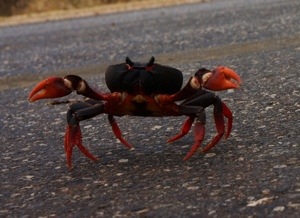
Drive the rest of the way into Havana, arriving around 2 PM. We are dropped at a beautiful old parador, called La Guarida, where we have a terrific lunch.
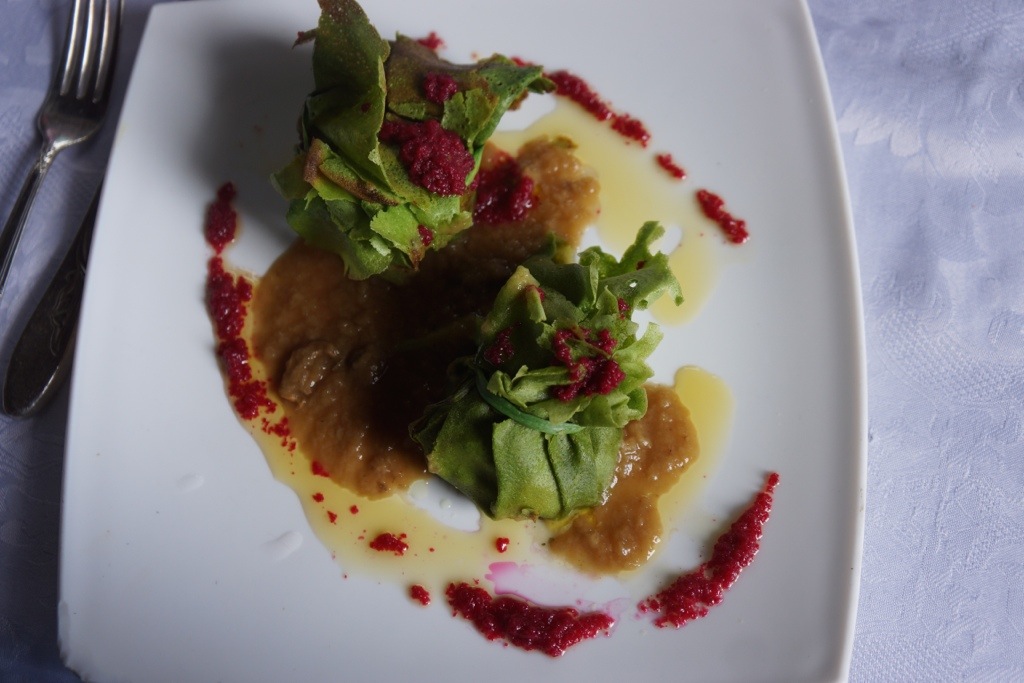
We also take many photos in the home, in and around a great old staircase and open area where a young boy has on boxing gloves, girls are playing and skipping rope and adults have a game of dominos going.
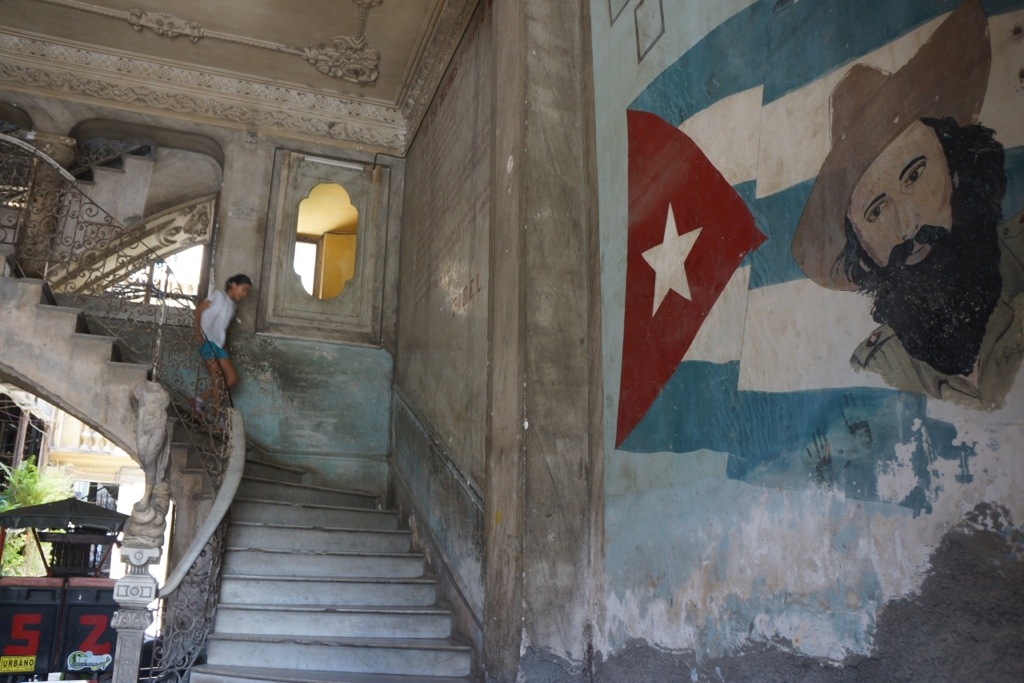
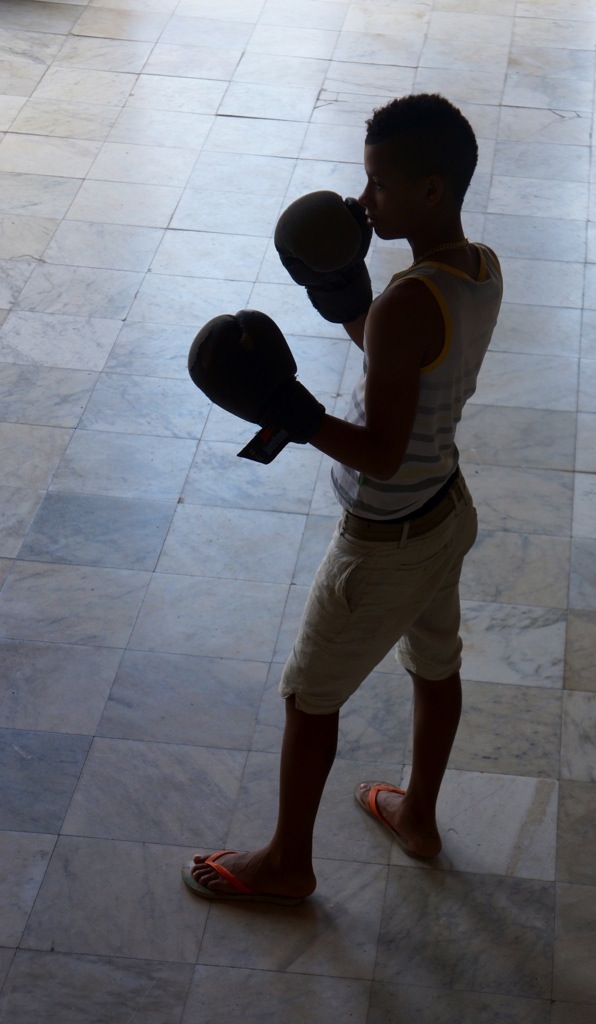
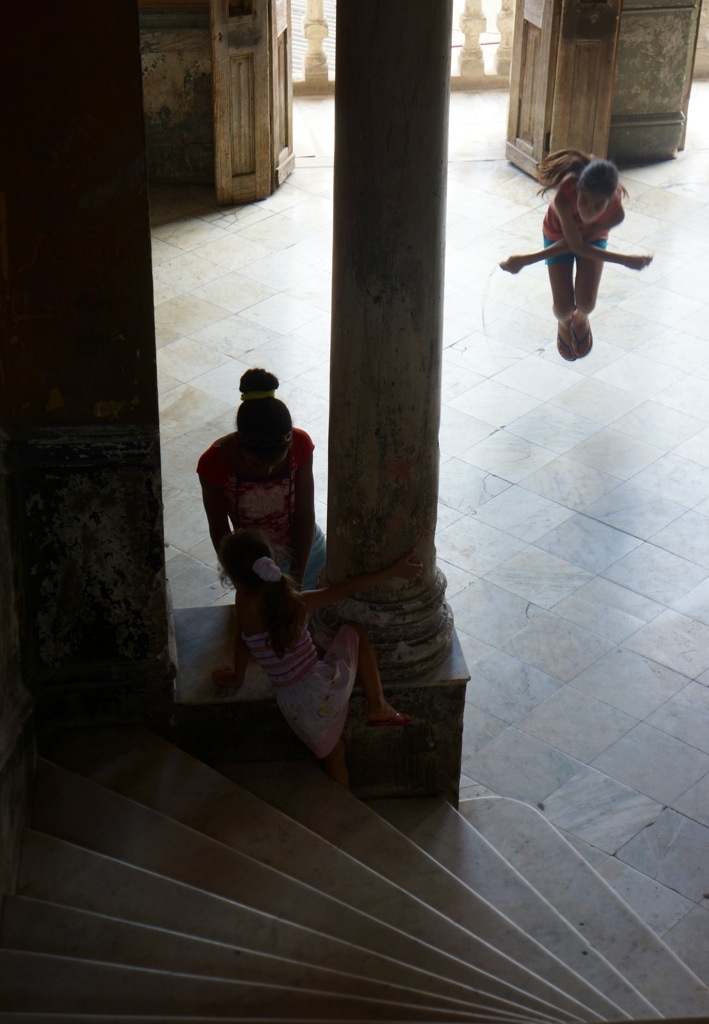

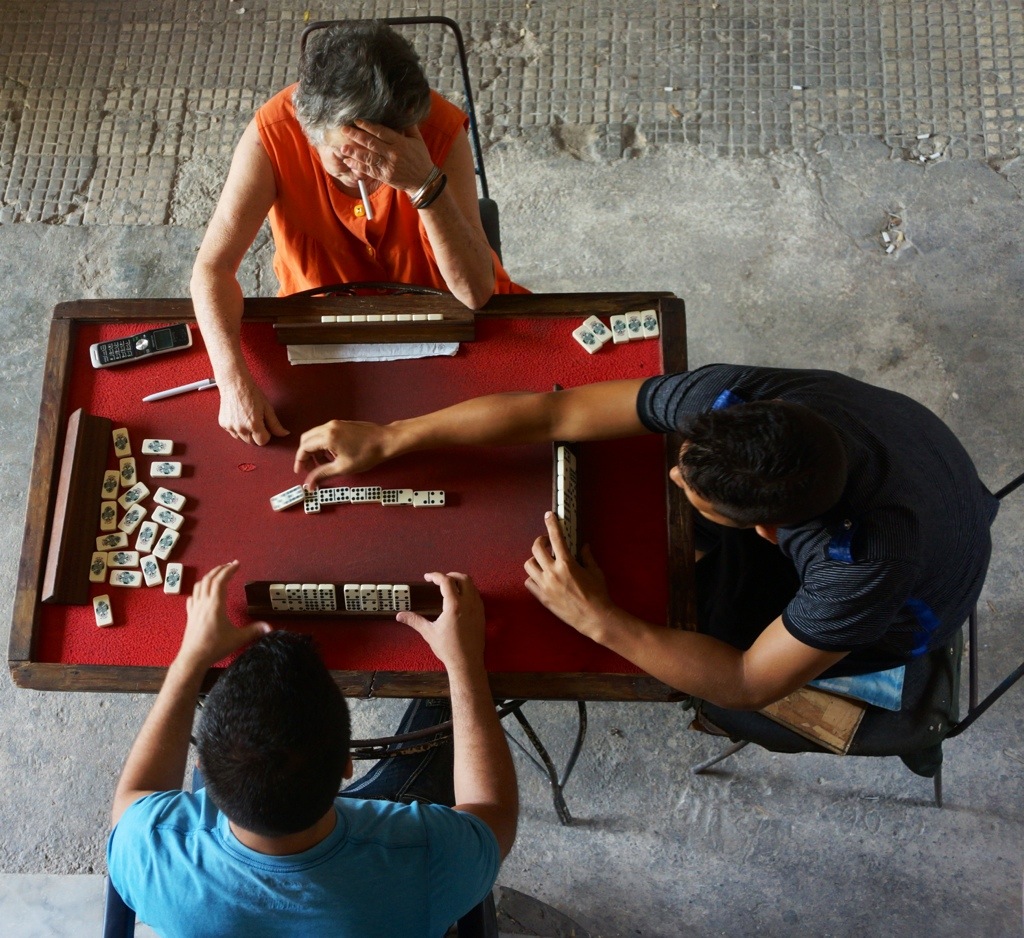
From here we taxi to the home of the daughter of the famous Cuban photographer, Korda. I admit to being skeptical that this will be worthwhile, but it turns out to be fascinating. Korda is best known for his revolution photos, including the iconic one of Che, but he was also a fashion photographer and was among the early people to photograph while diving. There are wonderful examples of his work around the house, including of Fidel with famous people like Hemingway (below) and his daughter, Diana Diaz, a former ballet dancer and friend of Jorge, is very gracious in showing us around and answering our questions.
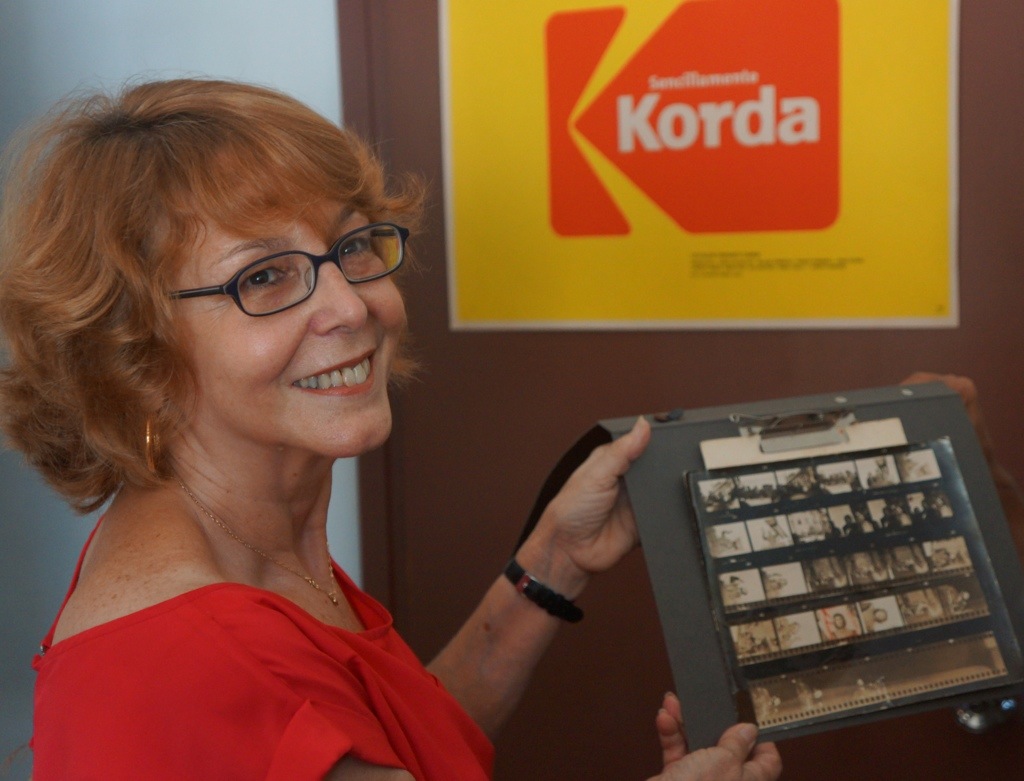
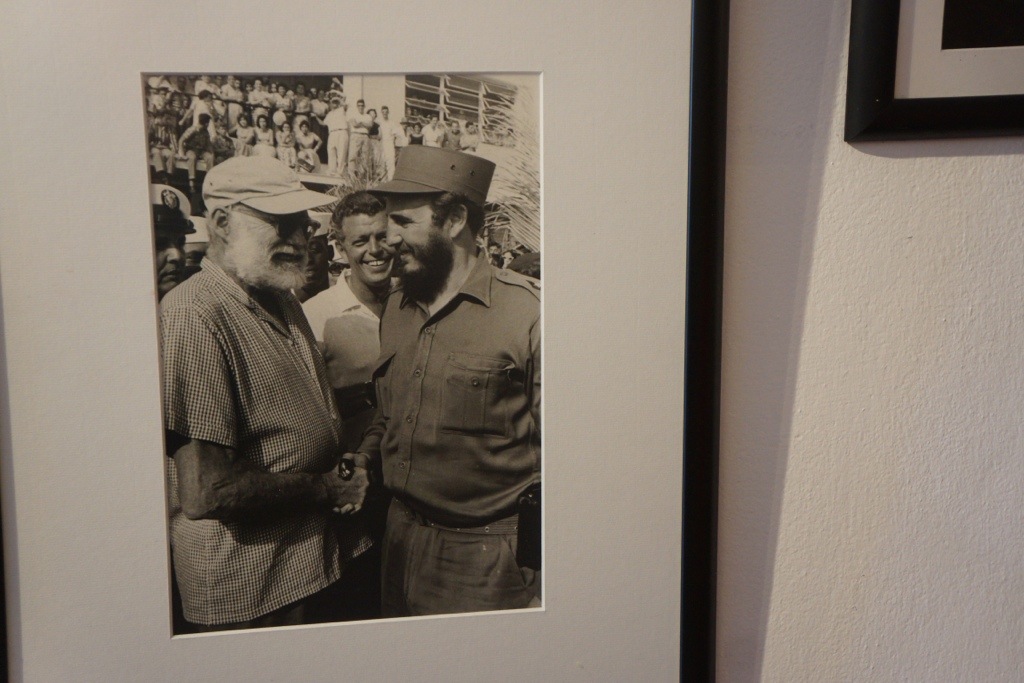
The famous photo of Che was taken in 1959, used to advertise some conferences in 1960 and 1961, then forgotten. An Italian journalist who went to Bolivia where Che was fighting in 1967 wanted a good photo of Che. He was directed to Korda, who gave him a copy of the photo as a present. Two months later, Che was killed in Bolivia. The Italian made a million copies of the photo, put his name on it and sold them for $5 each as his photo. Diana says that Korda felt that the recognition he later got was adequate compensation for the photo. In the photo of Diana above, she is holding the original of the contact sheet containing the famous photo of Che.
Around 5:30, we return to check in to the hotel, clean up and prepare for dinner, which we have outside in the Plaza de Catedral at El Patio. Cool breezes and a rather good meal. We meet Dustin’s Cuban girlfriend, Yani, who has just learned that she’s gotten a six-month visa to the US. Jorge brings a portfolio of his photographs. A few group members purchase photos, and Doug and Nevada trade photos with Jorge.
May 1
May Day, Labor Day in Trinidad, and we head down very early to the parade site, Cespedes Park, where people slowly gather. Once the time comes, though, just about the entire town is there, some of them under government pressure to come, others because they want to enjoy the festivities. The mood is jovial, a number of bands play and signs proclaim support for socialism, for Fidel, for the revolution, for the Cuban Five, who have been held in prison in the US for more than fifteen years on charges of spying and many pro-Chavez signs.
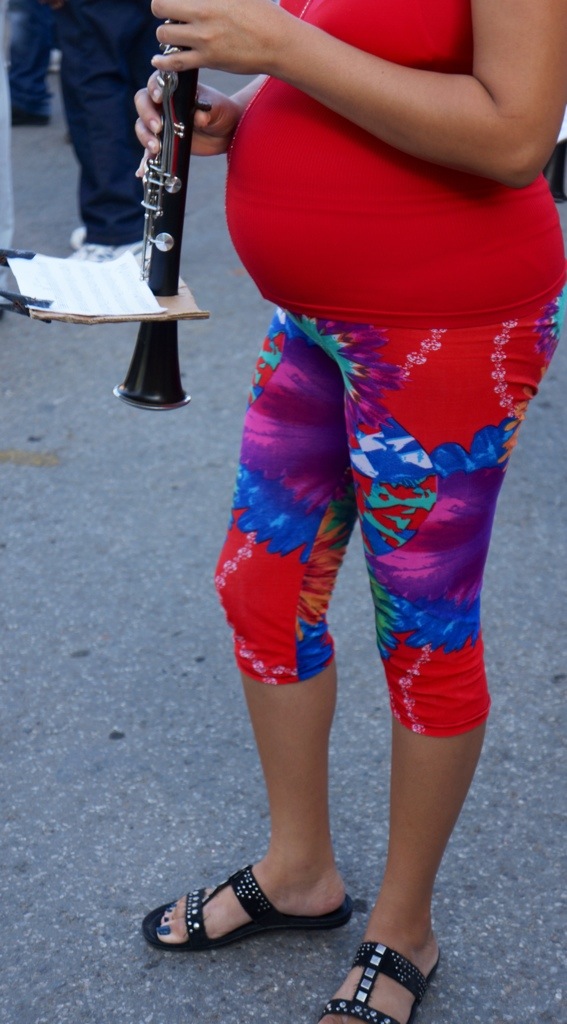
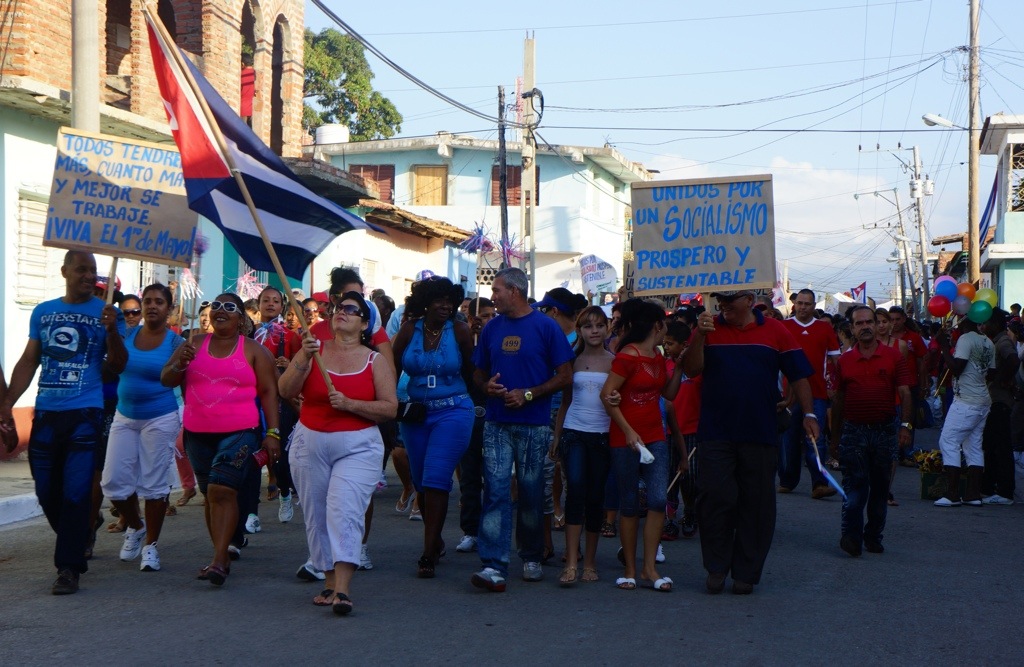
.
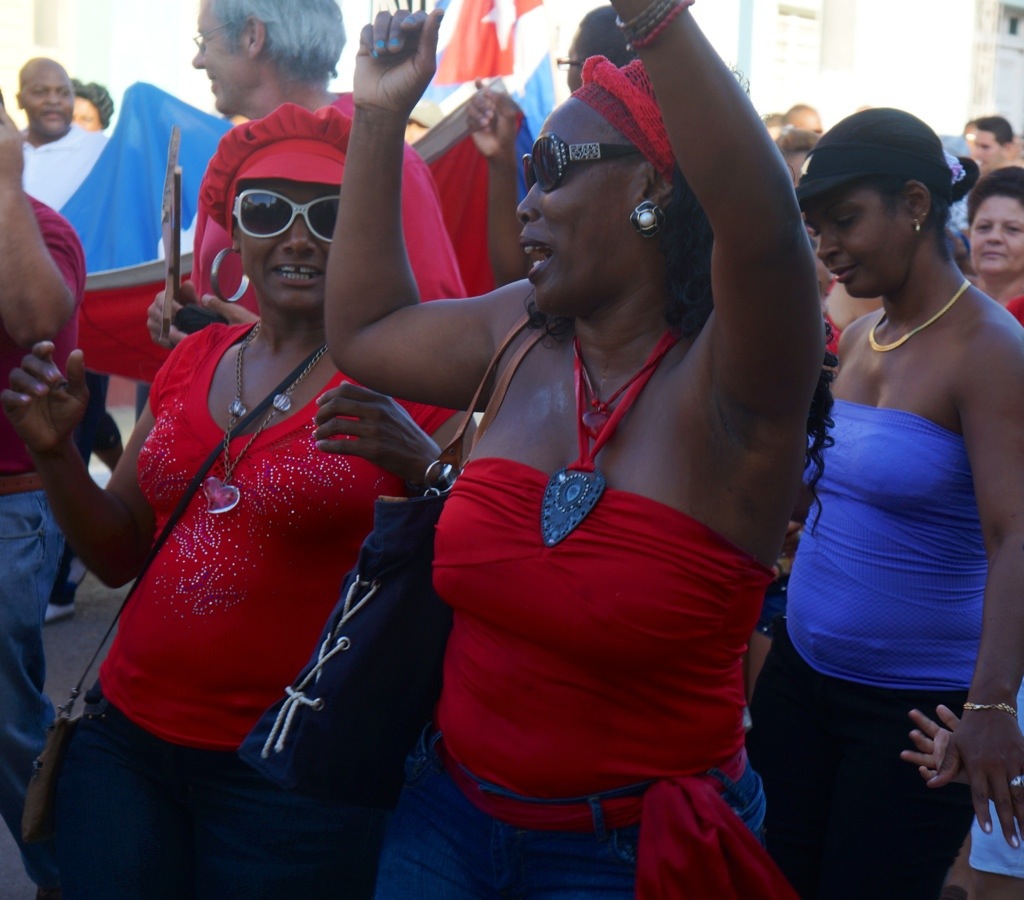
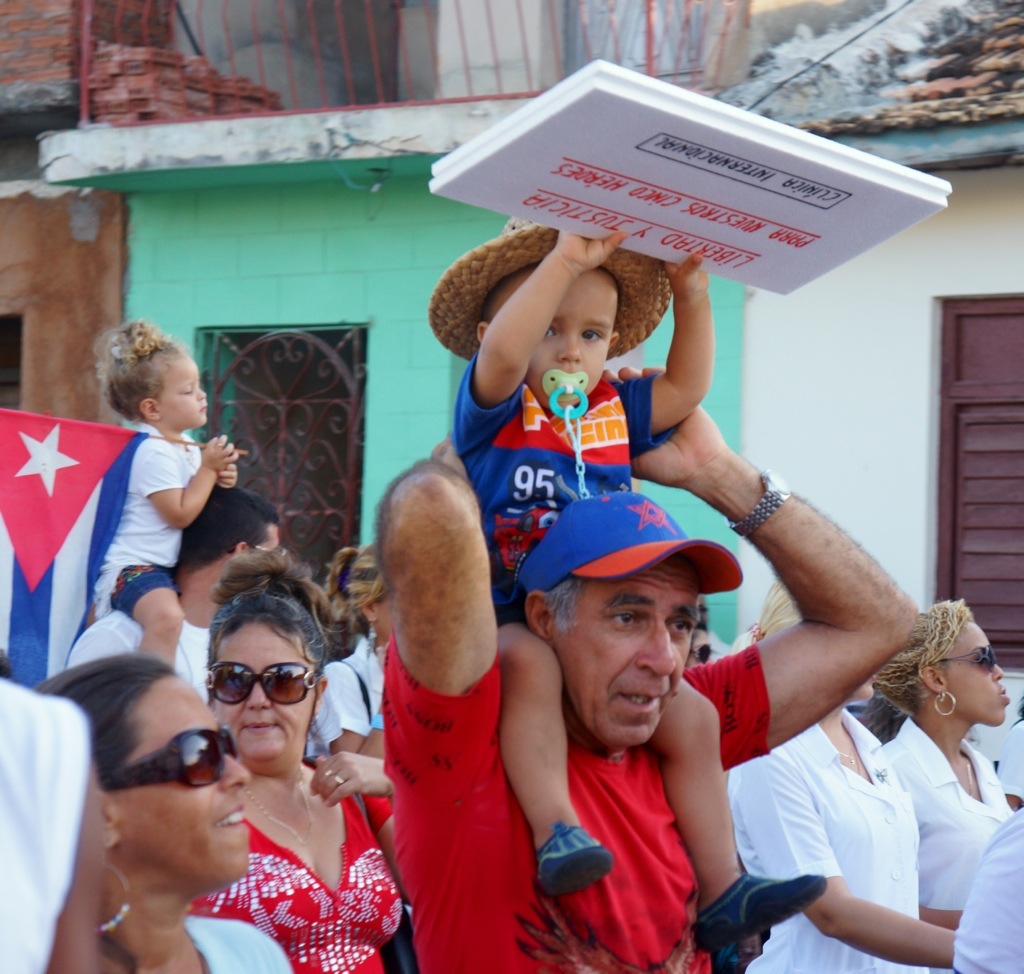
After watching for over an hour, Henry, Doug and I retire for coffee in a fancy hotel lobby on the square. Henry and I are able to see some of Doug’s fabulous black and white photos on an iPhone. They are stunningly good. Doug is a professional photographer whose style is very different from Nevada’s, but whose photos are every bit as good. You can see his work at www.douglasethridge.com.
The group meets and we retire to Julio’s house to relax, then bus to the Grill Caribe on an oceanside beach. We spend several hours relaxing on lounges under thatch-roofed cabanas and lunching. Around three, we bus to a farm owned by a friend of Julio’s. Julio gives us a very interesting exhibition of horse whispering, in which he gains control of a horse he (says that he) has not seen before through the use of body language. As it is very hot, we all opt to be dropped back at the hotel to shower, change and relax before dinner.
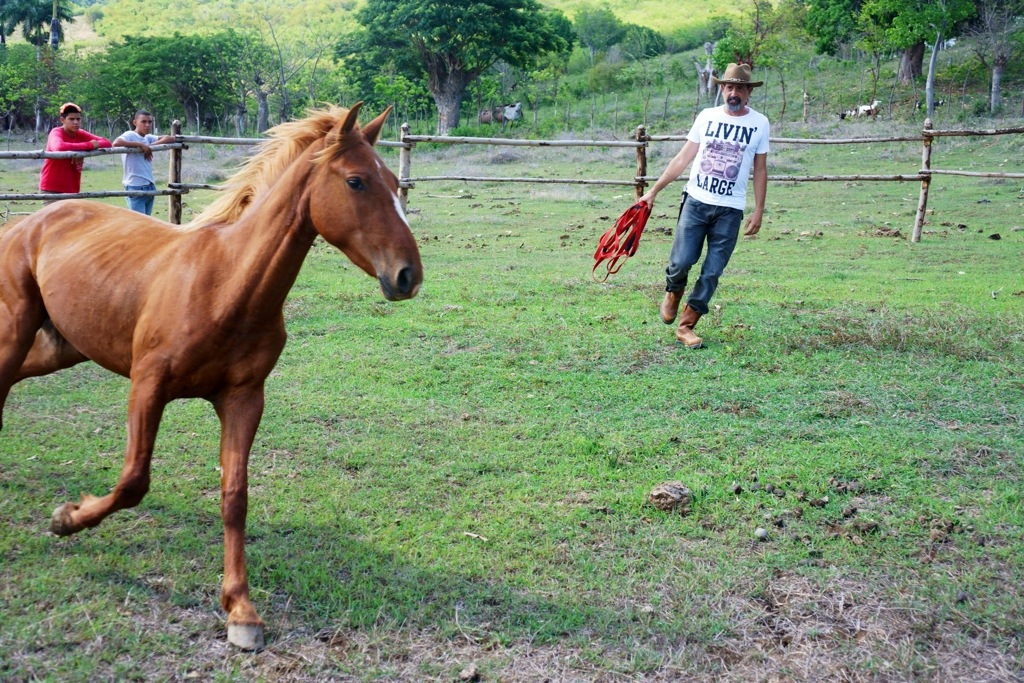
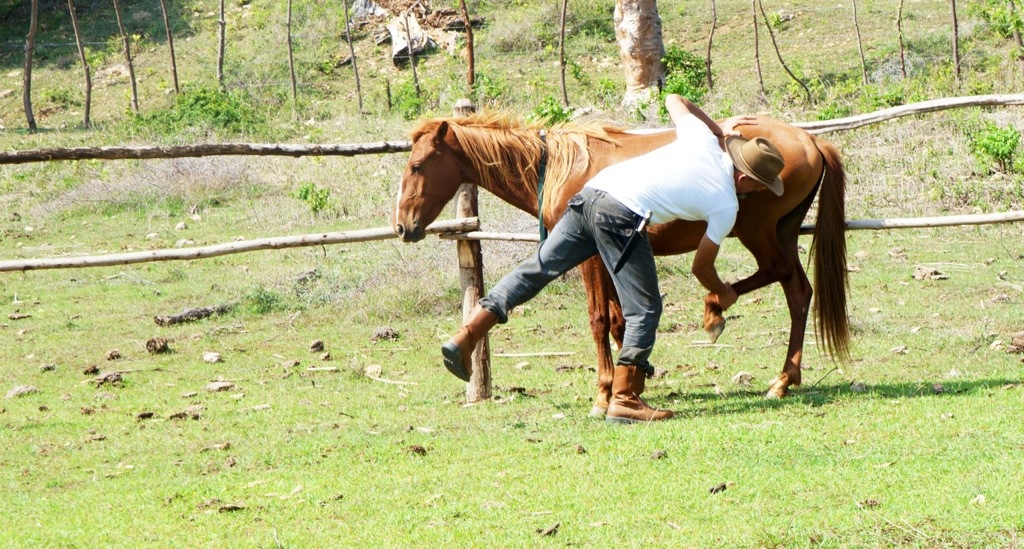
Bus back into town and wander around again photographing whatever catches my eye in the way of buildings and people. These wandering around times may be the best part of the trip.
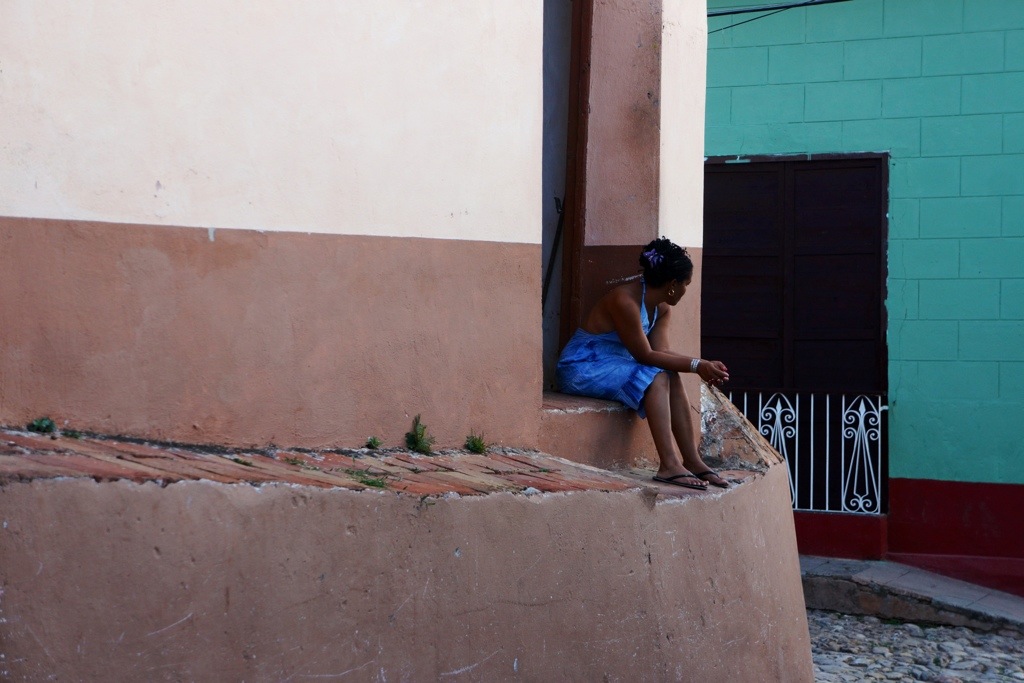
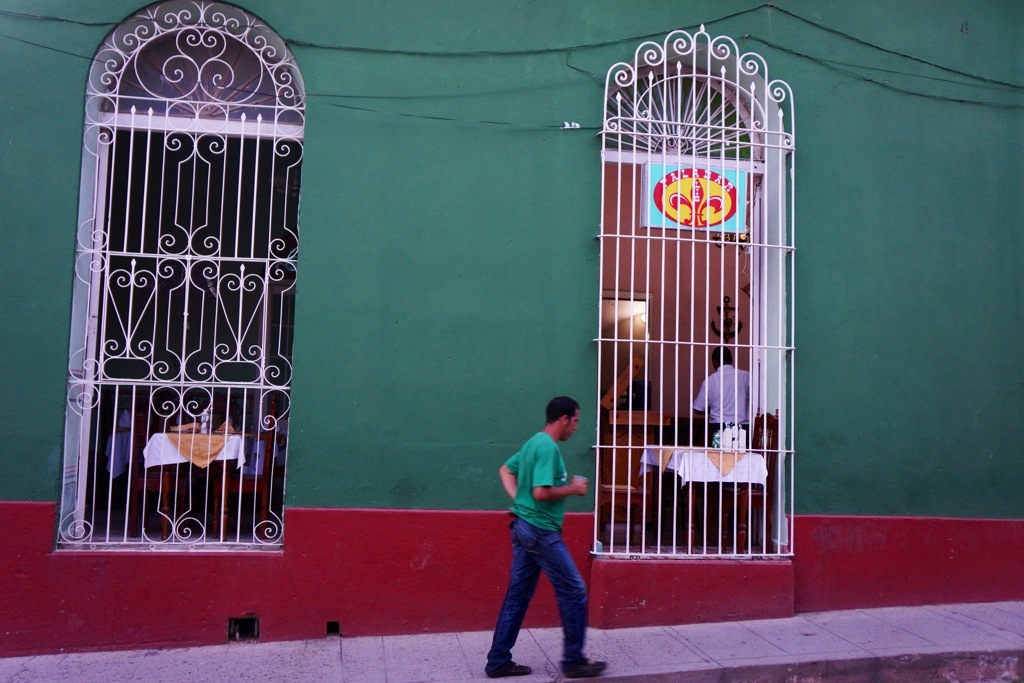
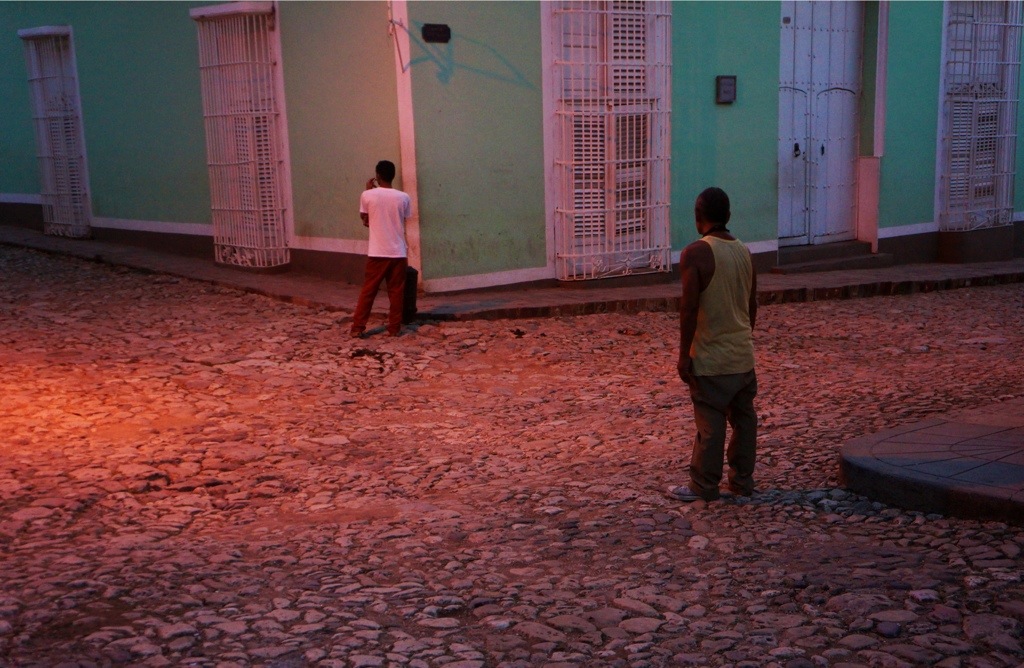
Meet up with Dustin to go to the restaurant he booked, right next door to the one we ate at last night, 1514 Restaurant. Antique pieces, open air courtyard and musicians with two excellent rumba dancers. We certainly have not been short changed on music and dancing, a predominant theme of our trip. Delicious lobster dish, beautifully presented, with creole sauce and vegetables which, with three chi-chis and tip comes to twenty CUCs.
Taxi back to hotel to pack and ready for tomorrow morning’s departure.
April 30
I opt to skip the early morning walk, so head off, after breakfast at the hotel, around 9 AM. First stop is a dance performance, at Palenque de los Congos Reales, an African/Cuban dance with dancers representing various African gods, then some rumba dances. Performance is good, if a bit repetitive of others we’ve seen. Some of us are called up to dance with the group and even a few minutes of not particularly strenuous dancing gives one a healthy appreciation for the energy and stamina demands on the dancers.
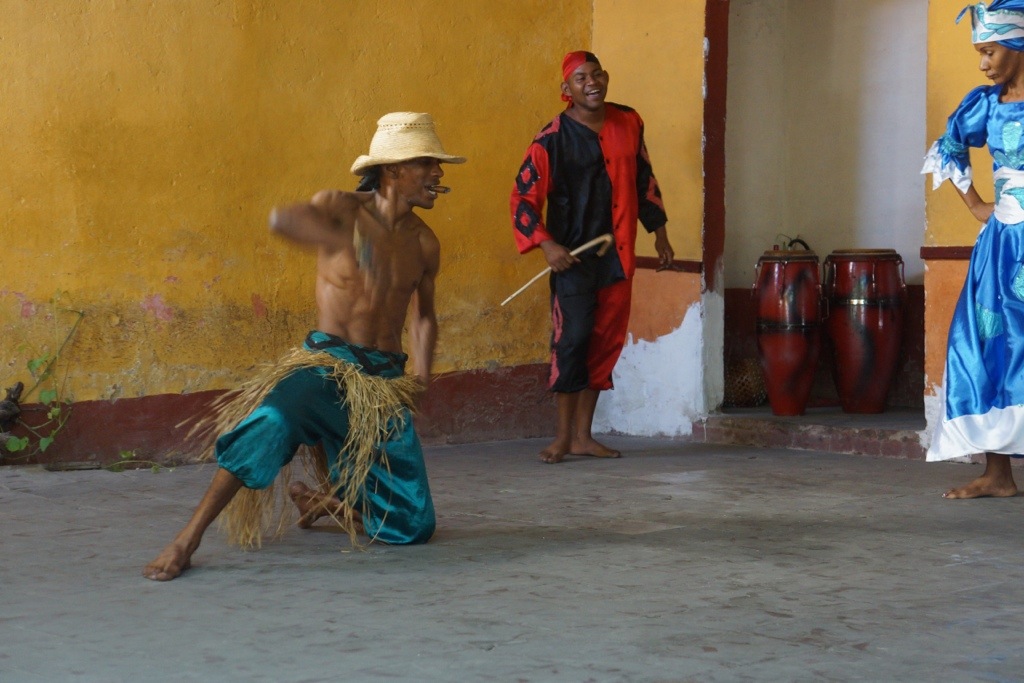
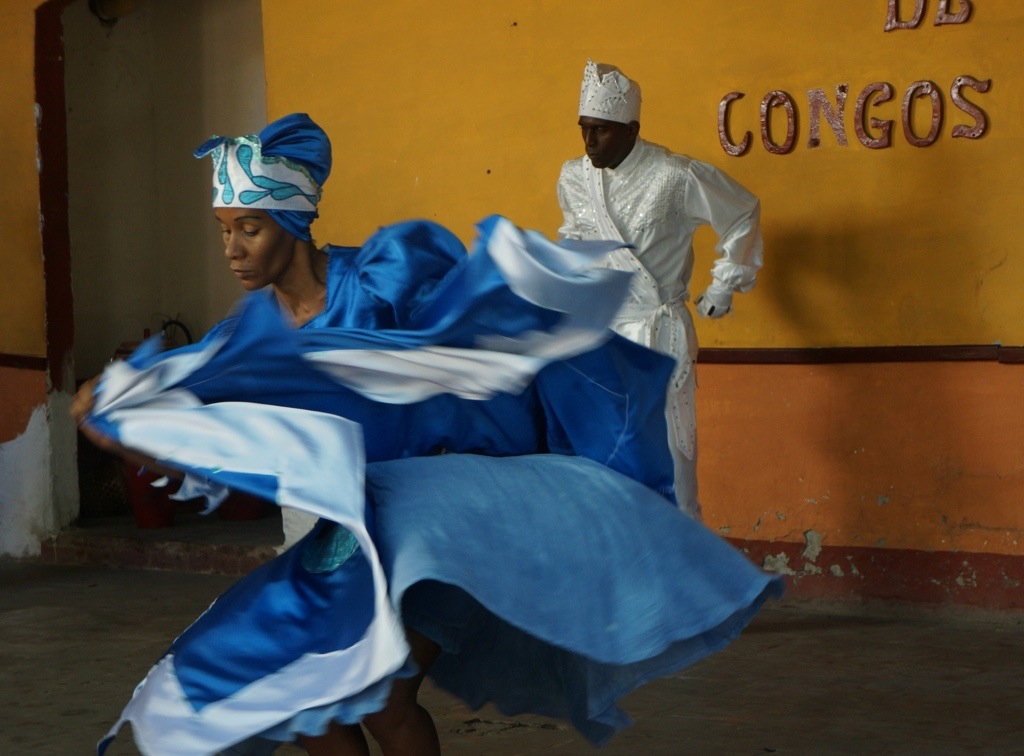

We head to the home and temple, Templo Yemalla, of a Santaria priest, named Israel Gomez. We see a shrine erected to the sea god, who,is the god of this temple. Julio explains how the Santaria religion links African gods with saints of the Catholic Church. Israel blesses and purifies Nevada, who he picks out without having been told that she is the leader. He allows us to take photos of him, and we walk around a bit before leaving. Israel became a priest as the result of his discovery of an African artifact buried in the house grounds, which was taken as a sign of his future role. There is no plan for succession, and when I ask Julio whether Israel is married, he says that there is no prohibition on that, but, between us, he thinks that many Santaria priests are gay.
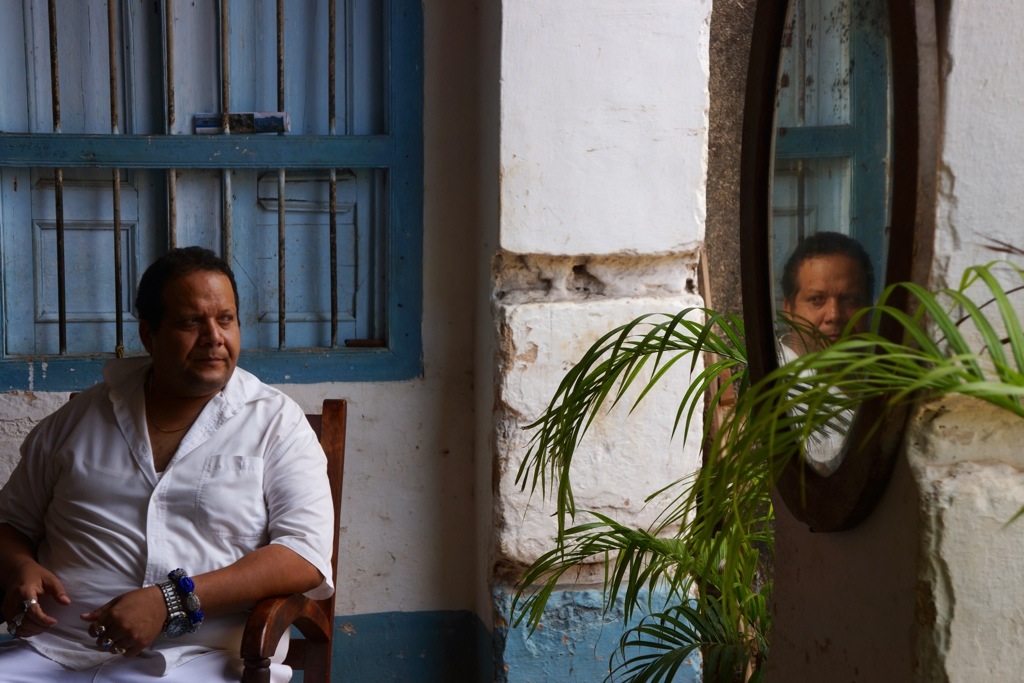
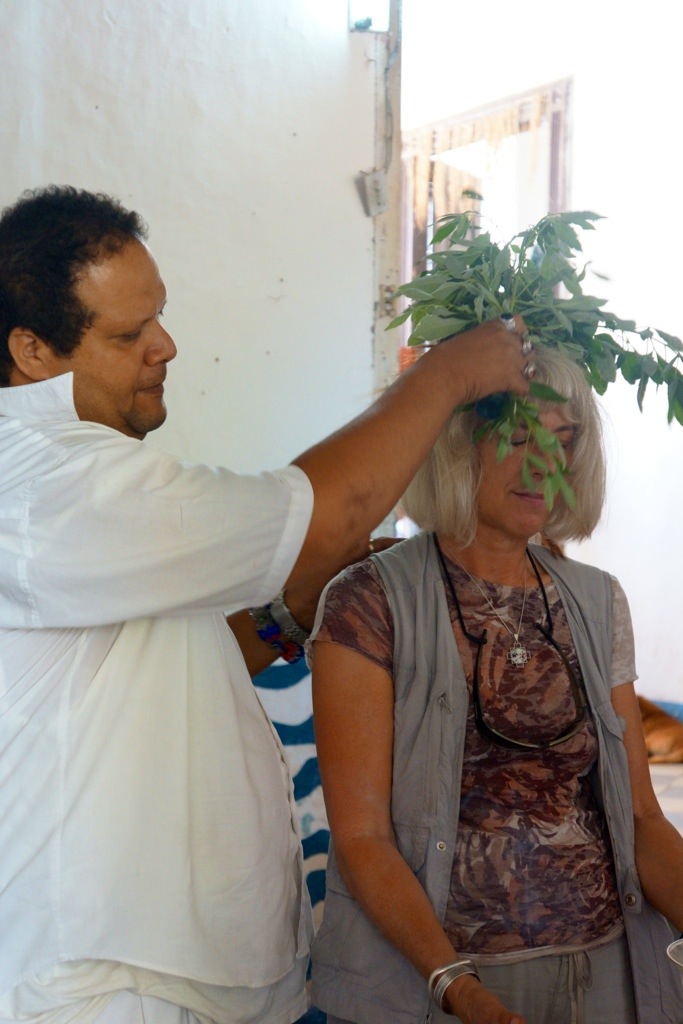
We walk to Julio’s home, photographing on the way. His home is large and attractive, and he runs three rooms as a B&B. We sit for some time, talking, and at one point, Julio marches his 3-year old horse, Apache, into the house and says that the horse is a stallion, “like me.” We look at some of Julio’s photographs, which are okay, but not exceptional. We walk a couple blocks to a restaurant, Cubita, where we have a large lunch.
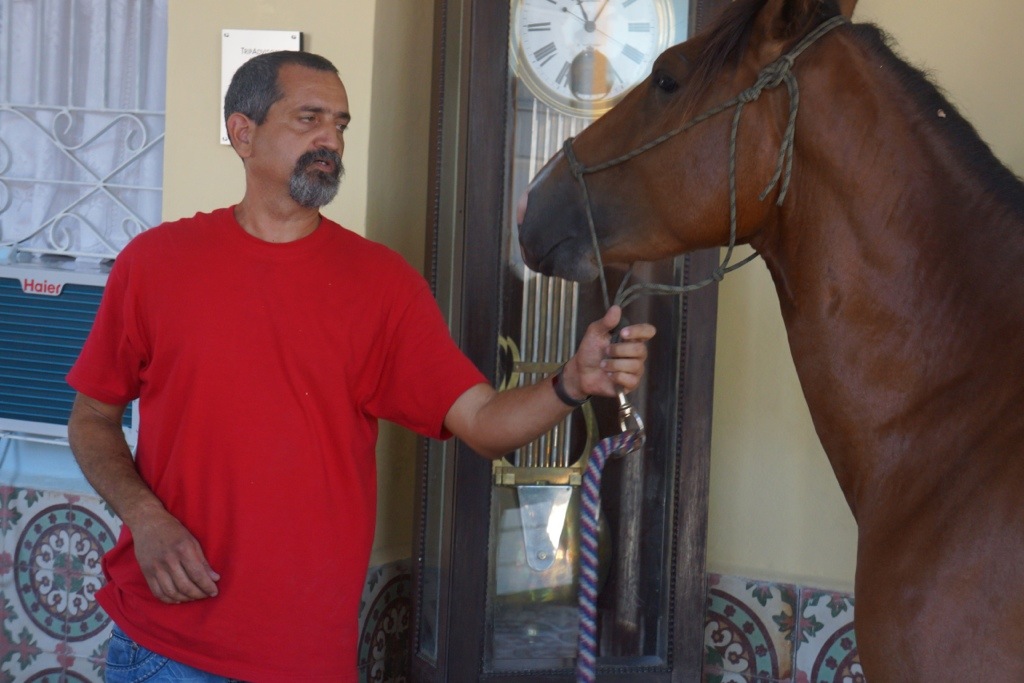
We bus to an arts academy, where we are shown around by the principal. It’s a large school, but has only 32 students in the 4-year program. Last year over 150 applied, but only six were accepted. They must do exams (produce work) in five disciplines to be considered for admission. We see some drawings and paintings by some third year students that are quite extraordinarily good. The school has been in existence at this high school level for 25 years and many of its graduates are successful artists, including a sculptor who lives in NY, having married an American and whose work is displayed in New York.
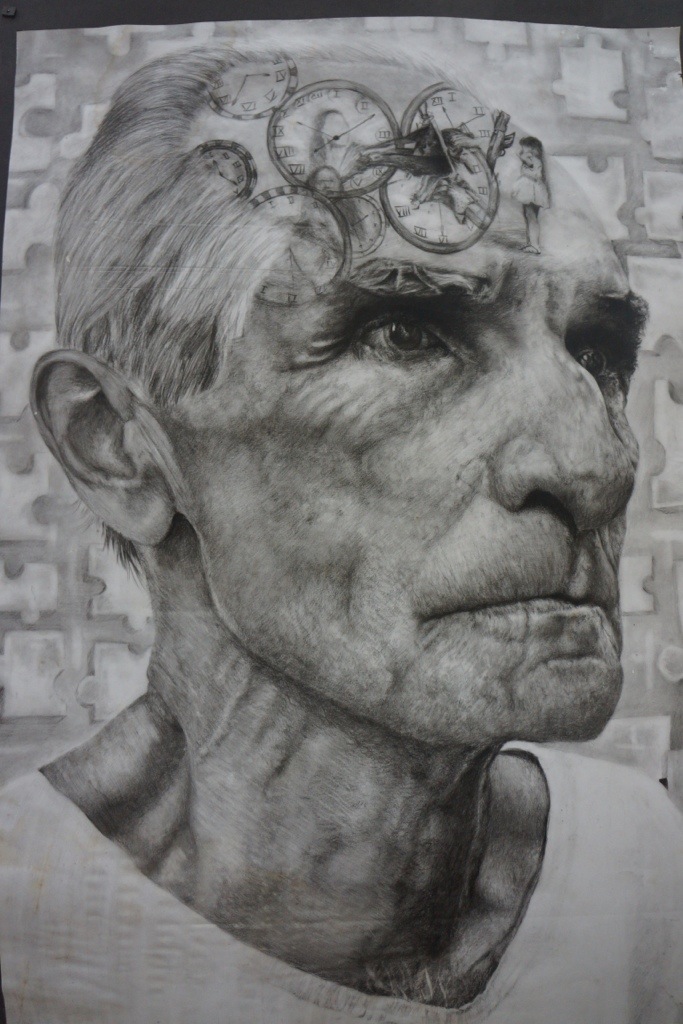
It’s quite hot in the sun today, so we are happy to return to our rooms for a couple hours to rest, before setting forth again at 6:15. Again, I decide to separate from the group in walking around town and, again, I’m pleased with the connections I’m able to make, one on one. I’m including quite a few photos from my walk.
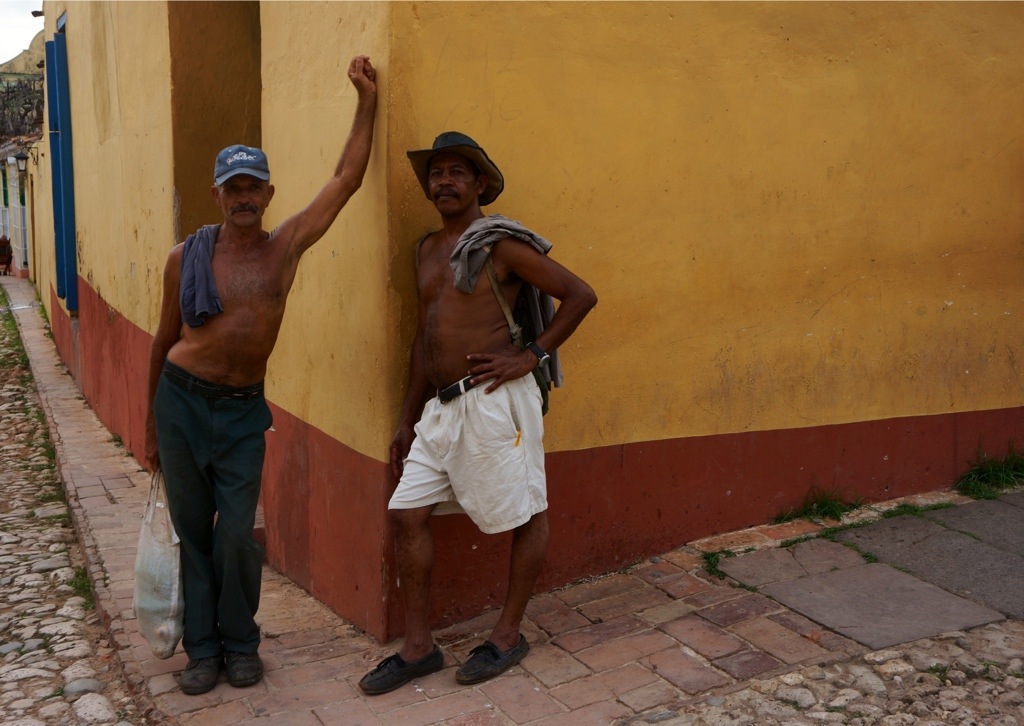
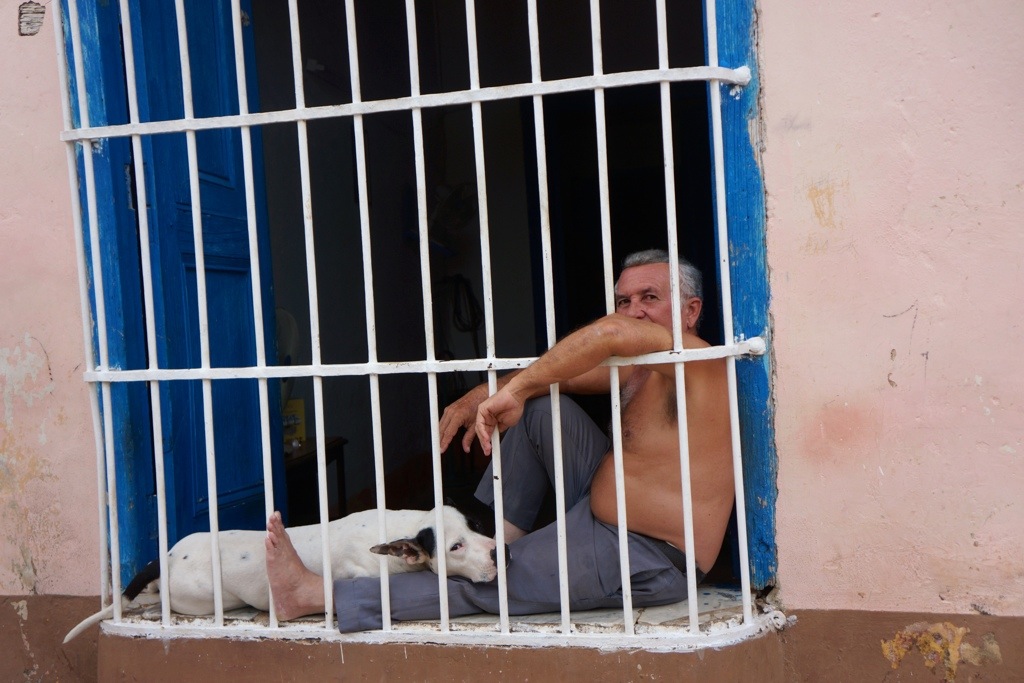
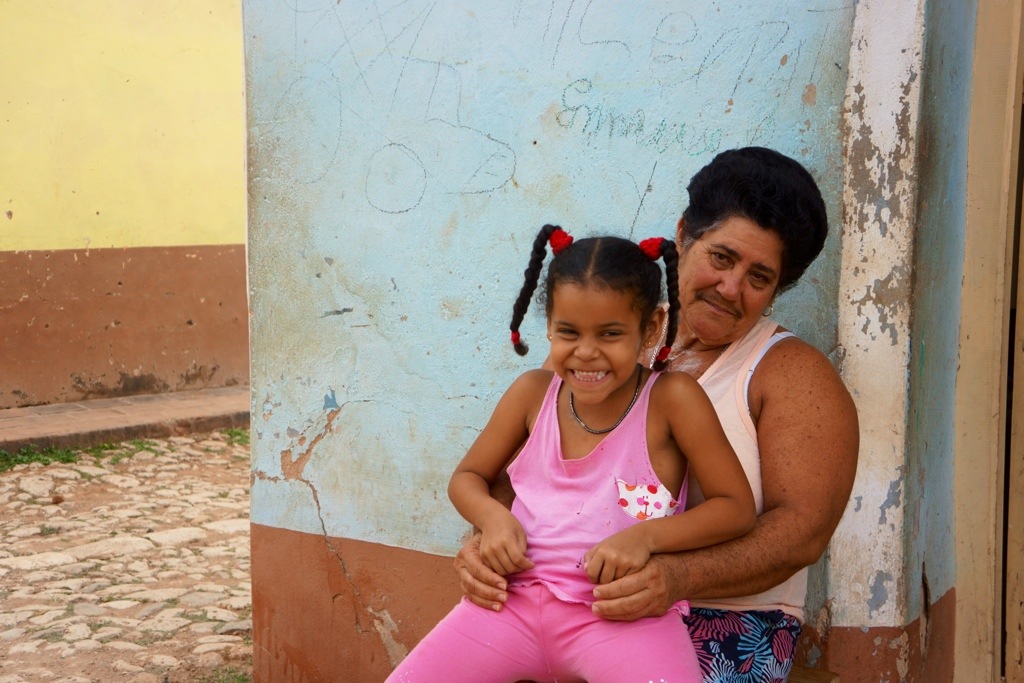
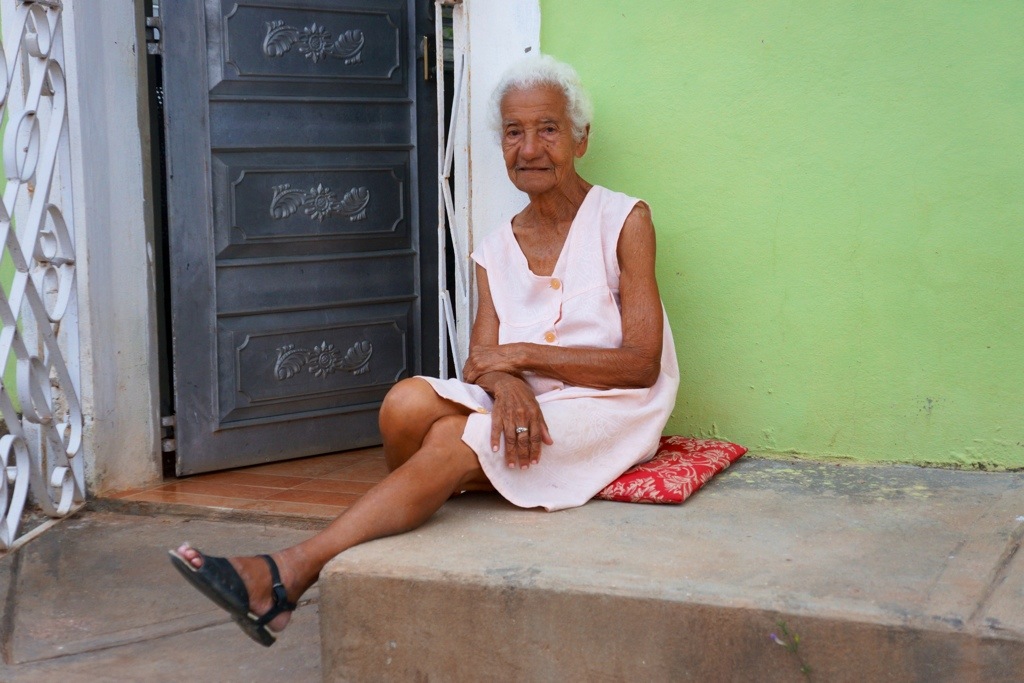
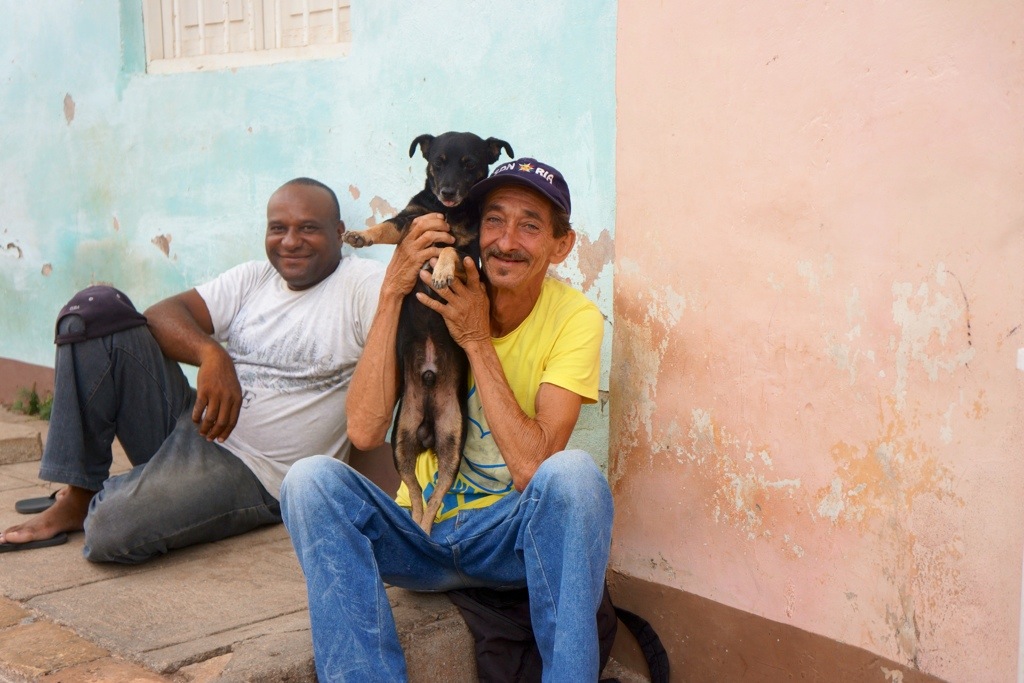
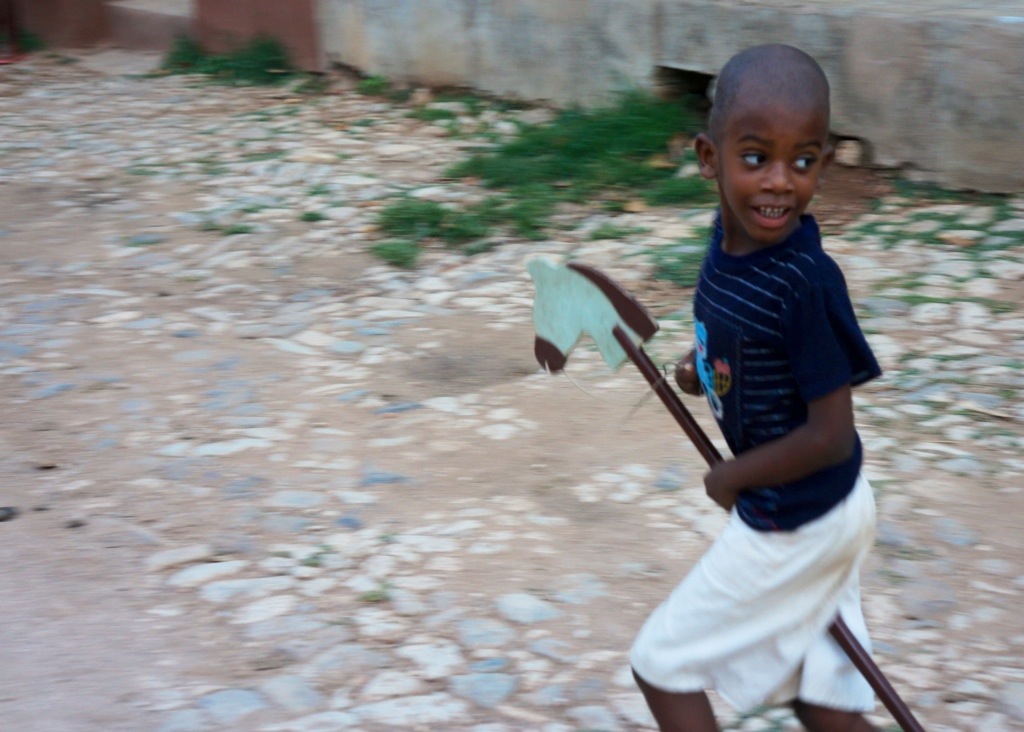
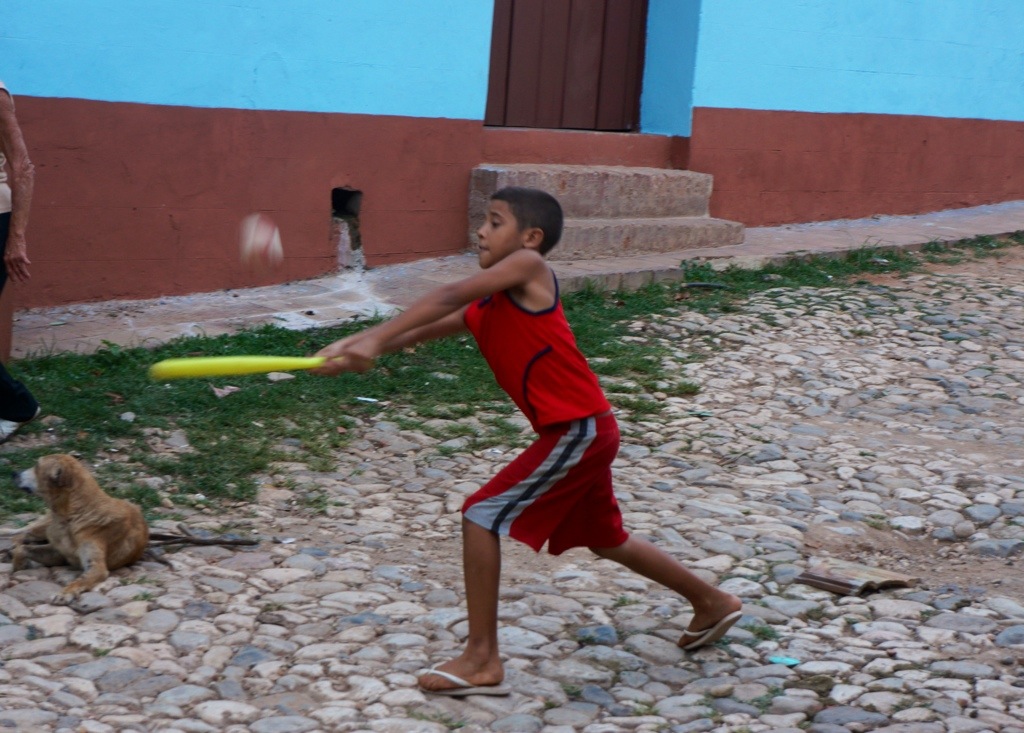 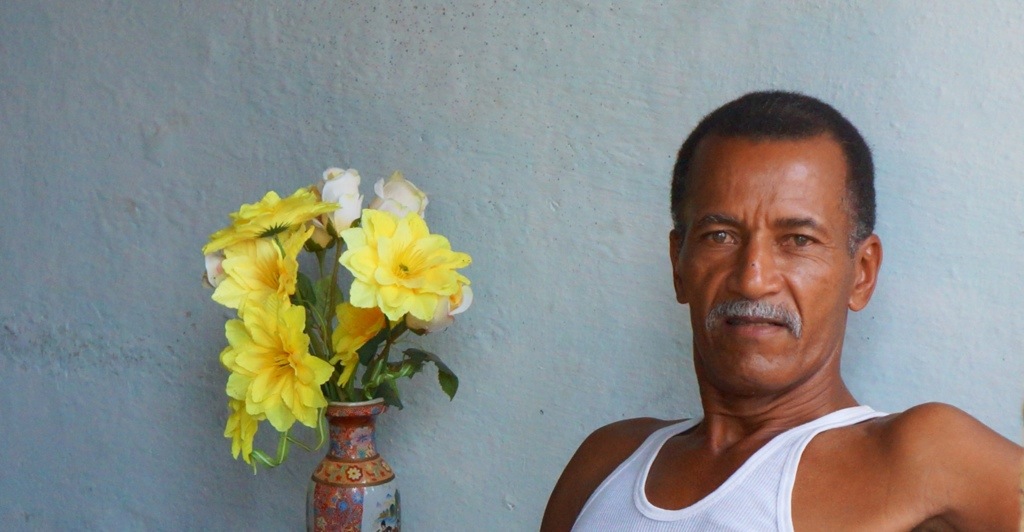
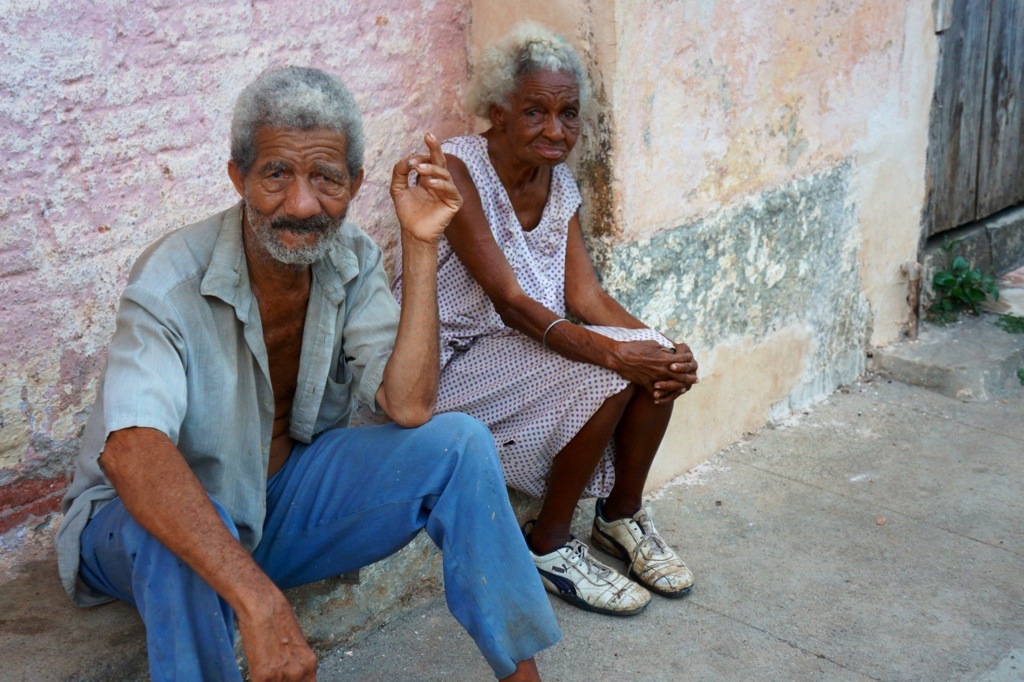
As planned, our group meets at a restaurant recently established in his home by a friend of Laura’s, Malibran Palador. Food is terrific and plentiful. A good, young group of men plays and sings local music and, for the last number, entices four or five members of our group to participate on various percussion instruments, which is great fun to watch.
Walk to the bus. Very early start tomorrow. Here are a few street scenes from the walk to the bus.
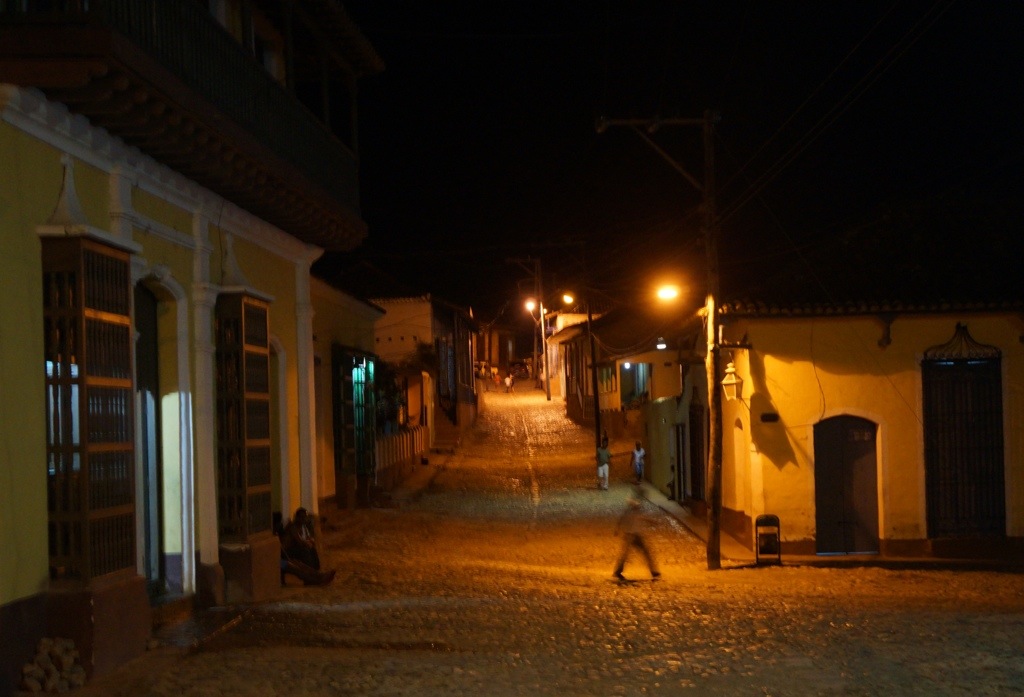
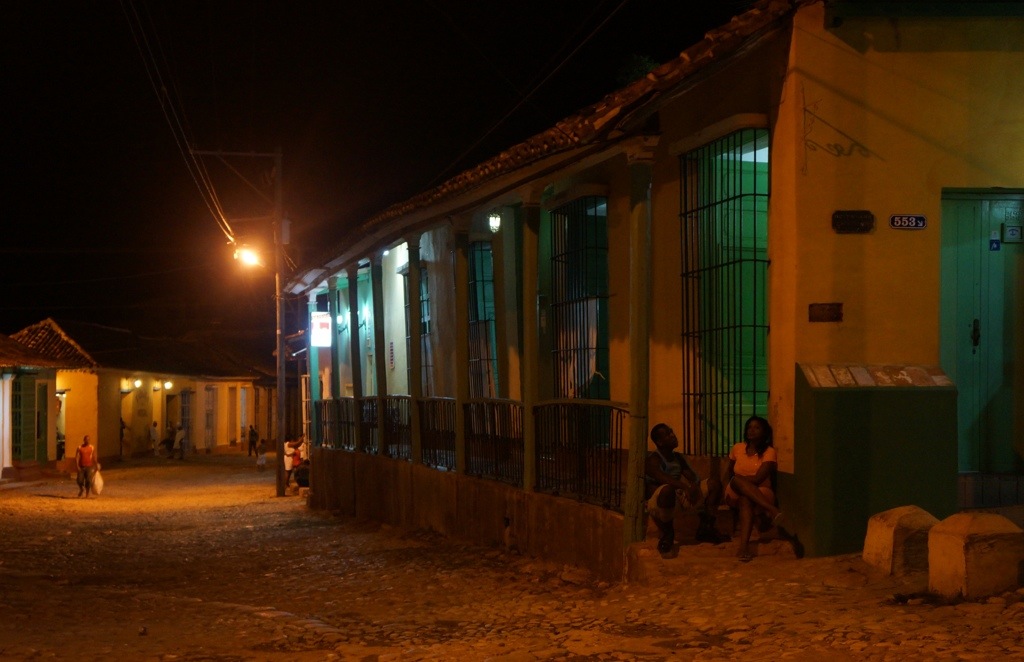
April 29
Finish packing, then up for rooftop buffet breakfast before setting off at 8 for long bus ride. On bus, Nevada talks about photography, much of which I’d heard in China, but it’s helpful to hear it again and be reminded. Several of the people on the trips are techie geeks, so there is a lot of talk that I understand little to nothing about. It did confirm my impression that the small SLRs like my Sony are the future, as they’ve been greatly improved already.
After a pit stop, Nevada spends a good deal of time with me reviewing images. This is very helpful, and confirms that I really had no notion of what I was doing in photographing things in the old house we visited. I think I can do a considerably better job next time. We reviewed some color and black and white images from Ghana, which also was helpful to me in figuring out what works in color, what in black and white, and what in either.
Lunch in city of Cienfuegos at a marina was fair, then on to Trinidad, where we make the obligatory local artisan stop at a pottery place, Casa Chichi ceramic factory, which, mercifully, was brief. Drove to our hotel, Las Cuevas, located on a hill above the city, where we met Julio, a photographer and quite a character. We had a long time to visit on a patio with a very pleasant breeze, because check-in took forever. We bus and walk up to our rooms, past a pool with Cuban rap music blasting. This place is unlikely to be mistaken for an Oberoi, but will do fine for the three nights I’m here.
Bus ride down to town and walk to the main square, Plaza Mayor, where we’re told we should meet again 21/2 hours later to walk to dinner. Julio is leading a walk for those who want to follow, or we’re free to break off whenever we want. After about half a block with the group, I turn right and go off on my own, seeing no reason to photograph with ten others.
This turns out to be a very good decision. It gives me a chance to practice my Spanish and allows me to talk with and photograph interesting scenes: a guy smoking a cigar walking his pig, kids playing ball, folks in windows and doorways, and more.
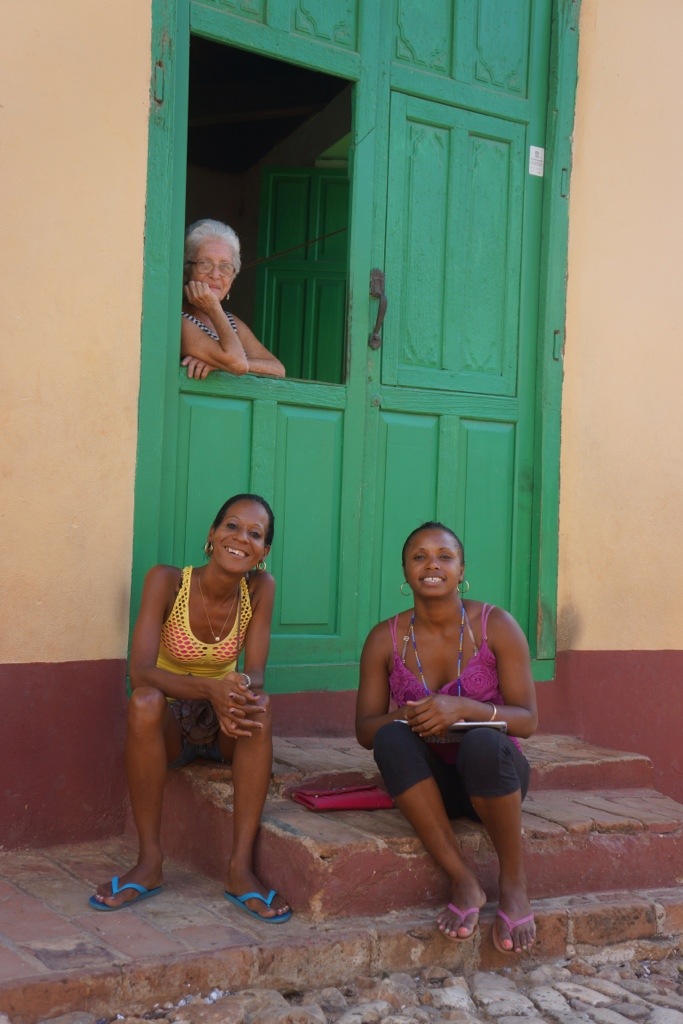
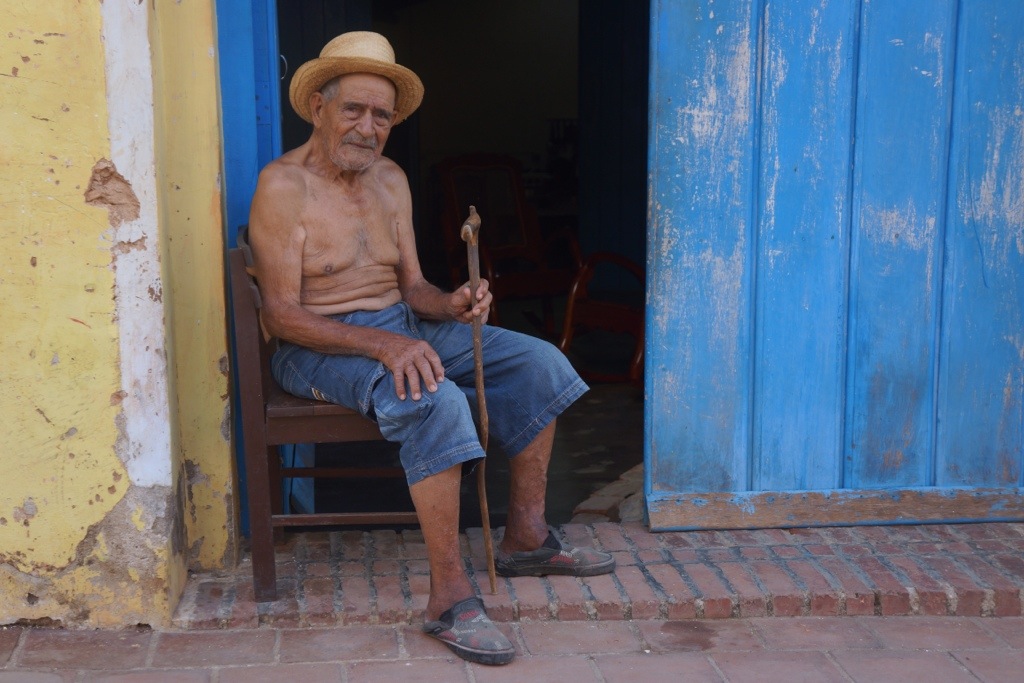
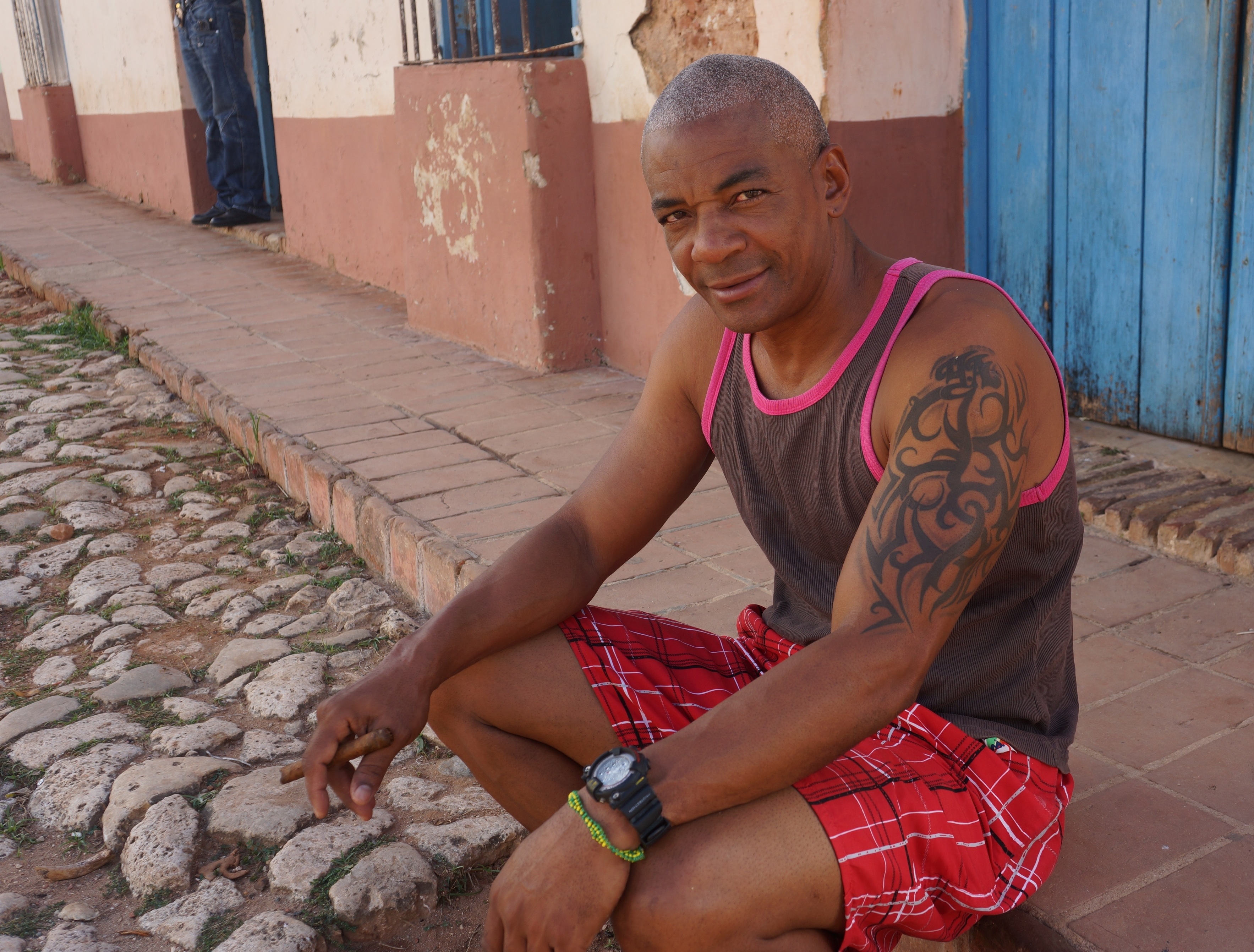
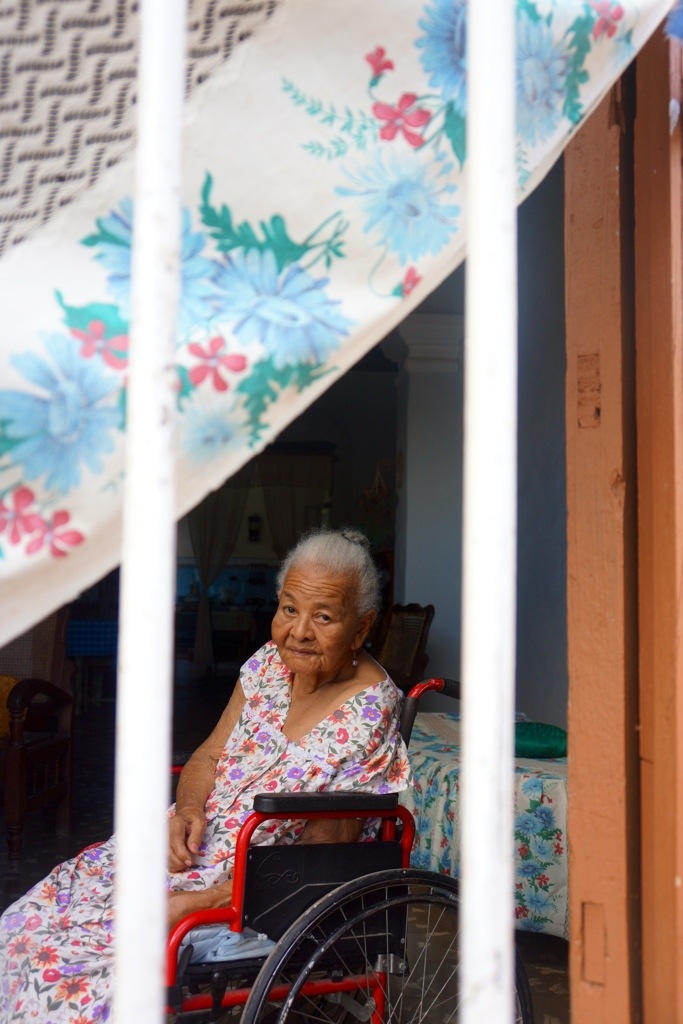
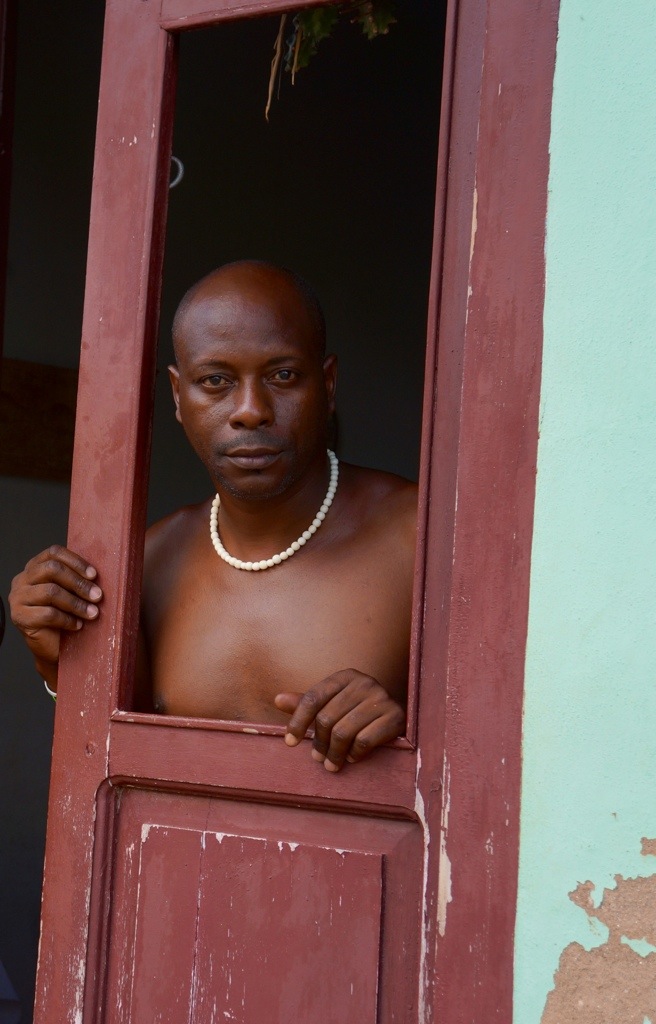
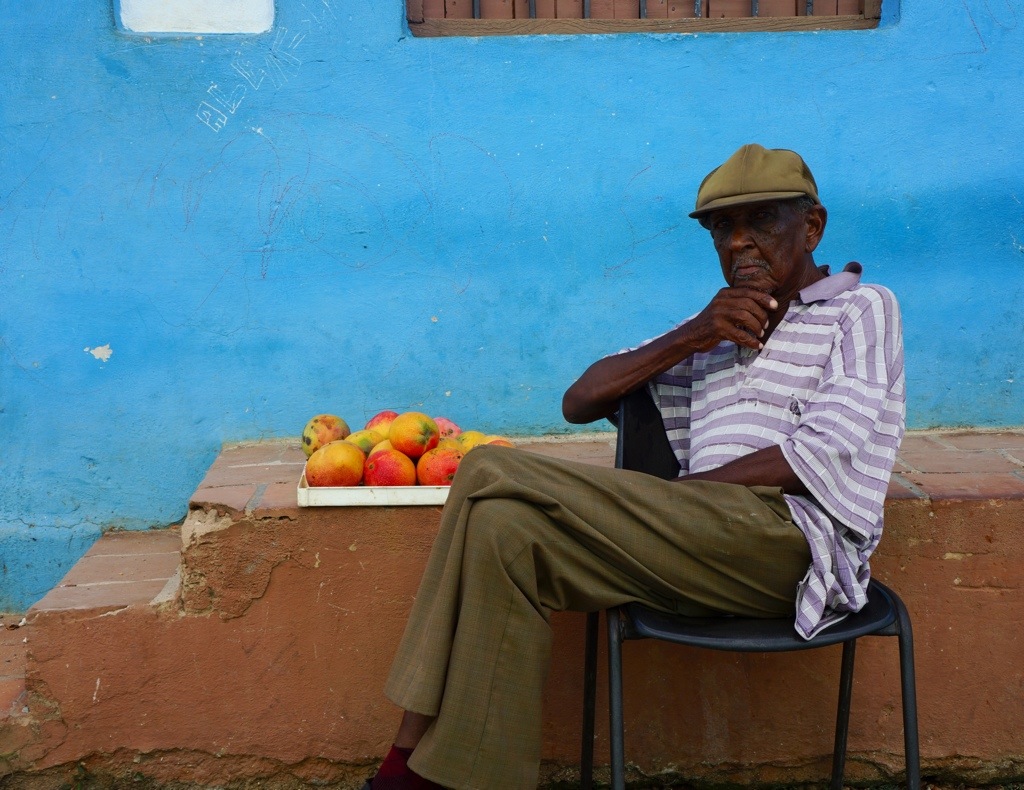
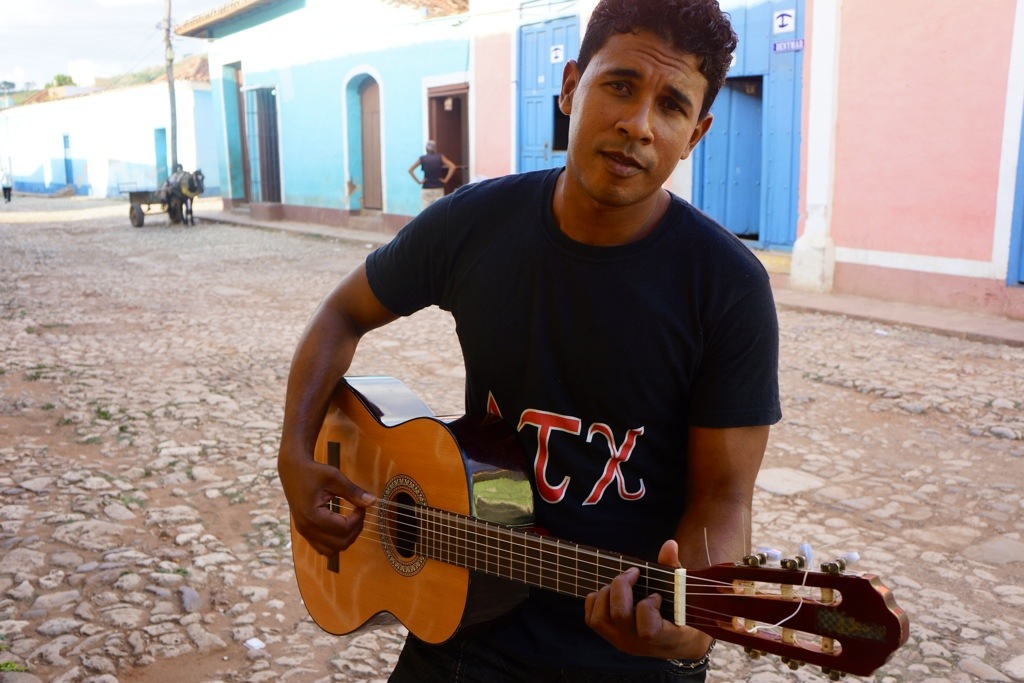
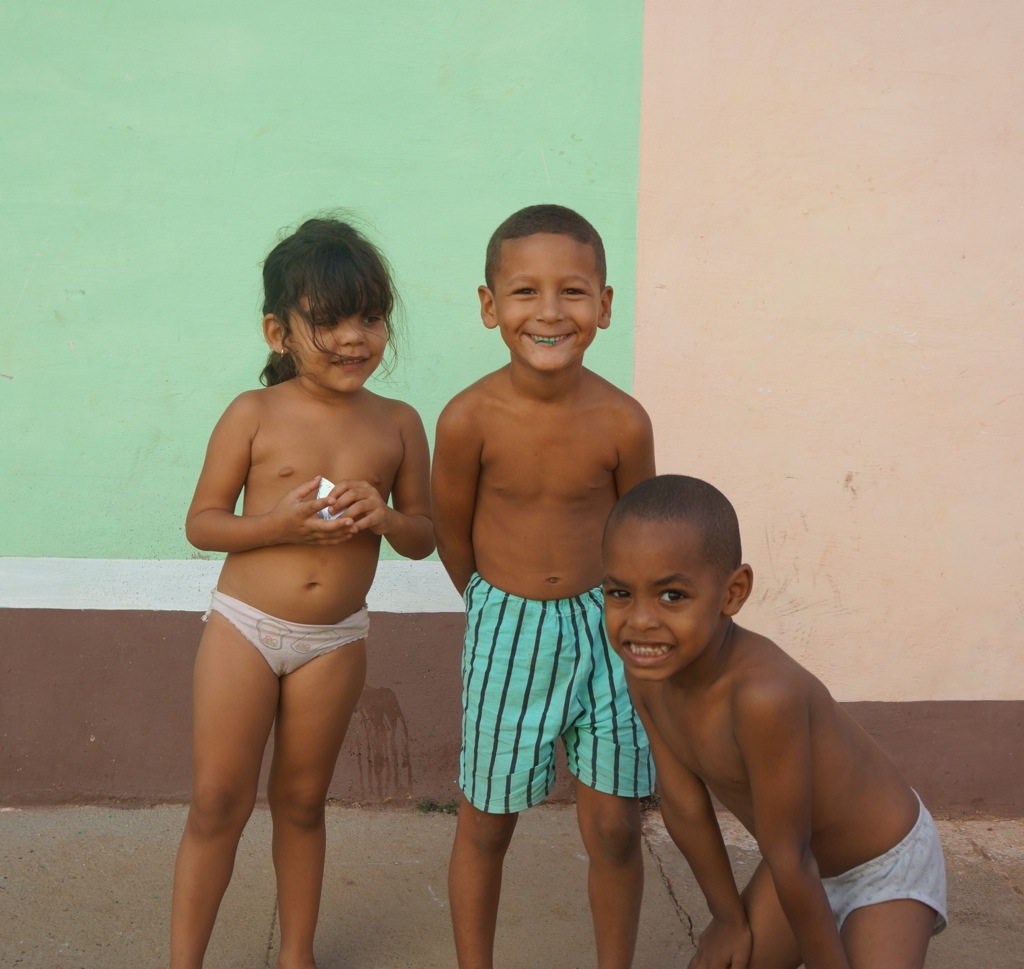
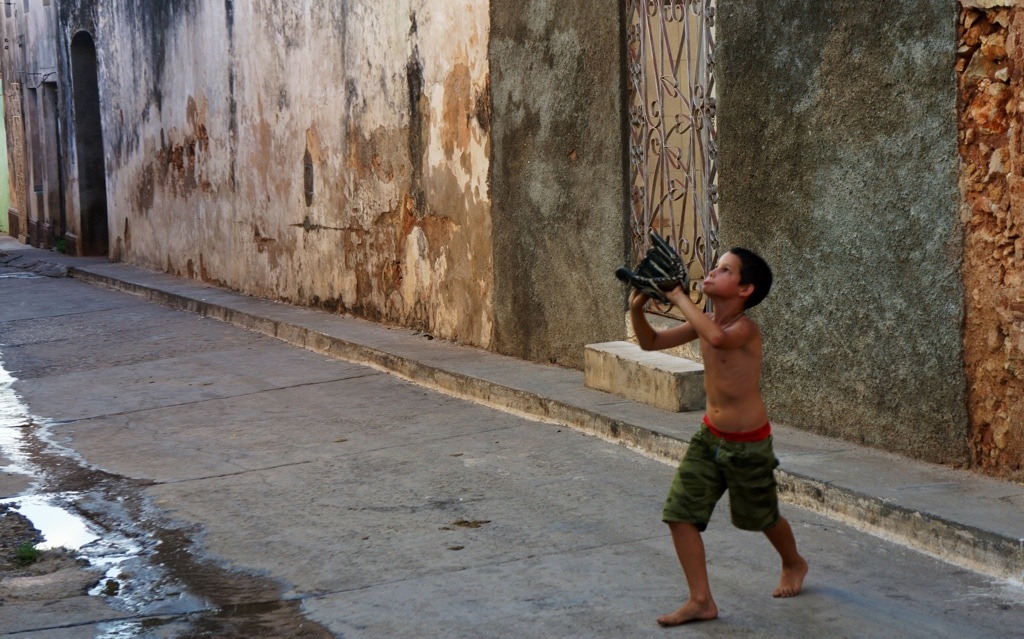
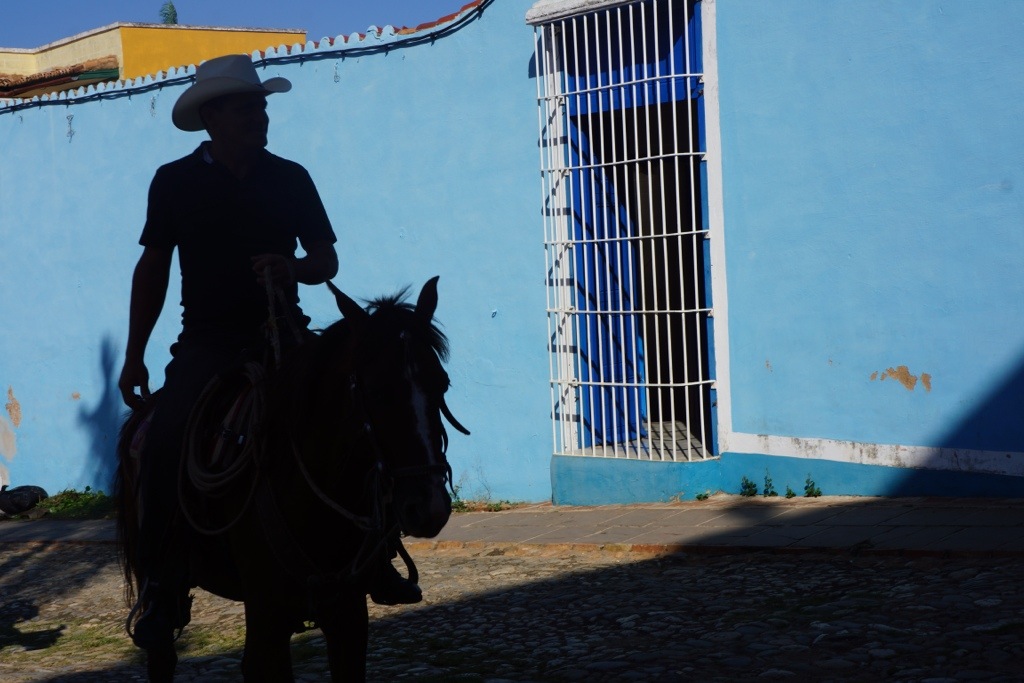
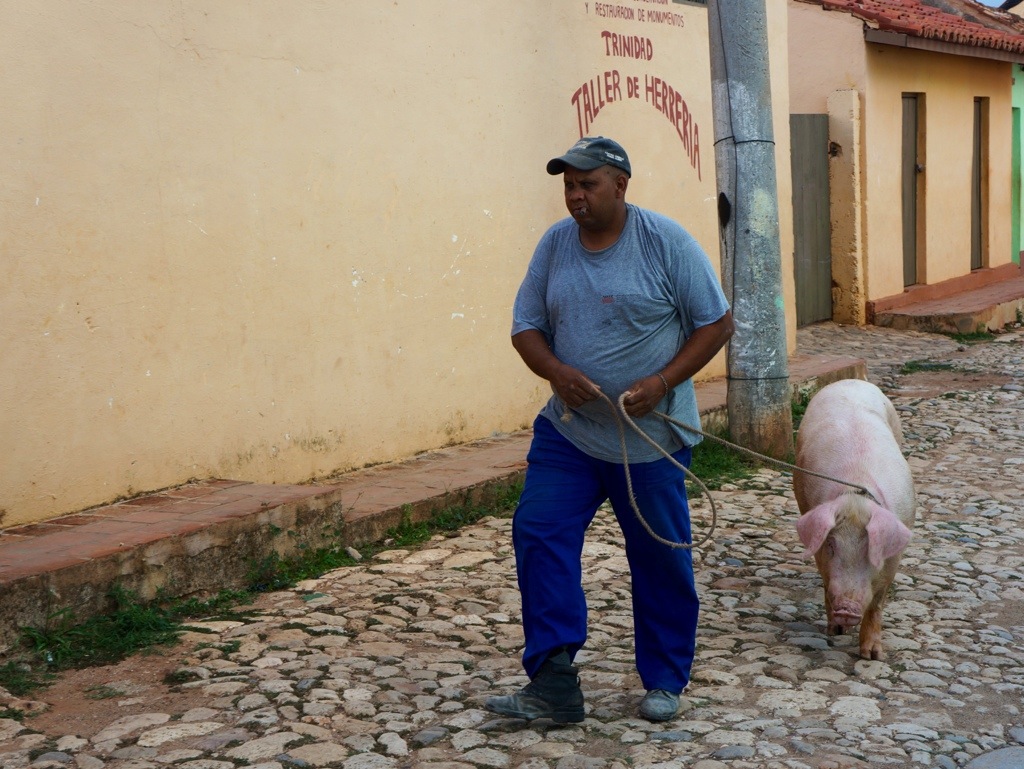
Trinidad is a charming city of about 30,000, the third city to b founded in Cuba, in 1514. Streets and sidewalks are cobblestone, and buildings are painted pastel colors. Very nice-looking restaurants and souvenir and artisan galleries dot the area, attesting to the importance of tourism to the city’s economy. Situated on the South coast of the island, fresh fish are plentiful.
I stop for a beer at a cafe with music around seven, and, looking around at couples from other countries with Cuba guide books, I think it’s a shame that we in the US are prevented by our government from traveling around Cuba freely. About 7:45, I wander down to our meeting place and hook up with Robert. Later, Dustin meets us and walks us to the restaurant, Vista Gourmet, where we have dinner and drinks. My lobster dinner is very tasty, and with drinks and tip comes to 26 CUCs. Talk with Robert, Tom, Theresa and Nevada over dinner. Taxi back to the hotel, shower and in bed by 11 PM.
April 28
Another walk through parts of Old Havana, past the Capitol and the closed-for-restoration National Theater. Colorfully painted and architecturally beautiful buildings give one the sense of the grandeur of what was here. People live in many of these old buildings, and others are being restored. Photograph street scenes and talk to Dustin about recent changes that permit people to get licenses and own their own businesses, changes pushed by Raul Castro, who is in his late seventies. Fidel, about 87, appears still to be with it and healthy, according to Dustin.
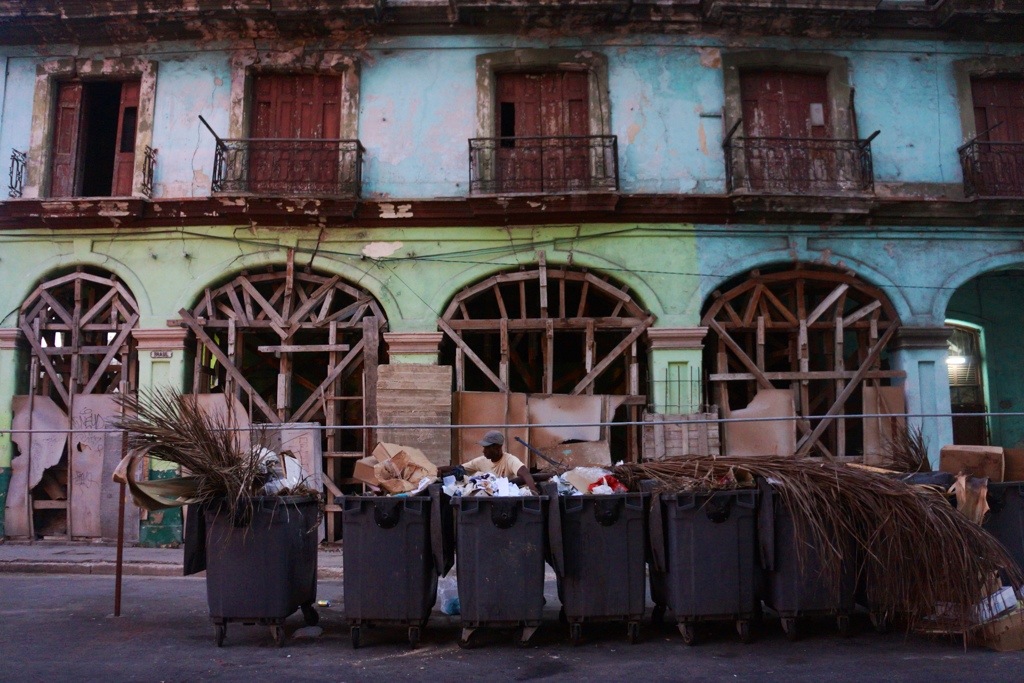
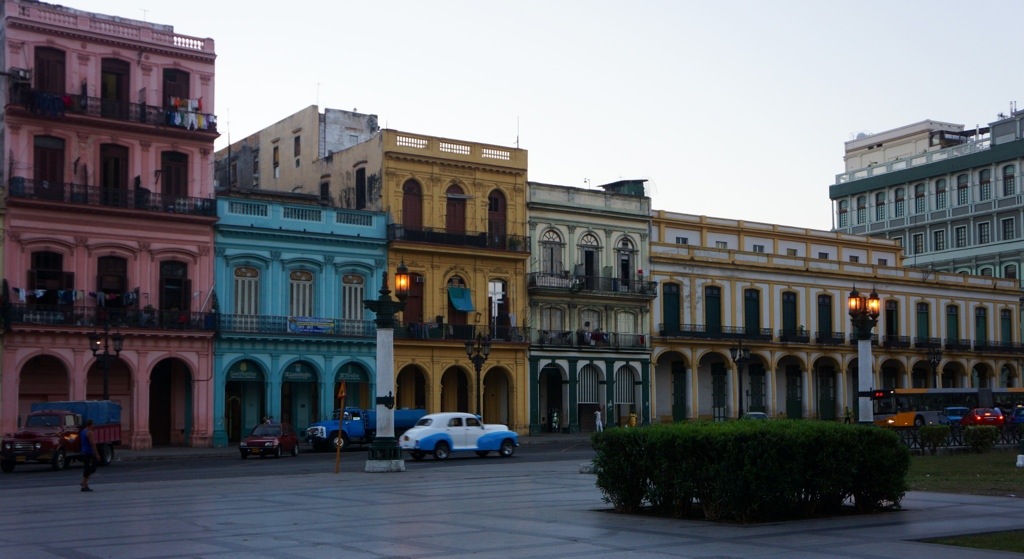
Another breakfast on the very pleasant rooftop of our hotel, then meet at 9 for taxis to the huge Havana cemetery, Necropolis Cristóbal Colón, where since its founding in 1871, over two million people are buried. Walk around the cemetery for 40 minutes, but cannot even scratch the surface.
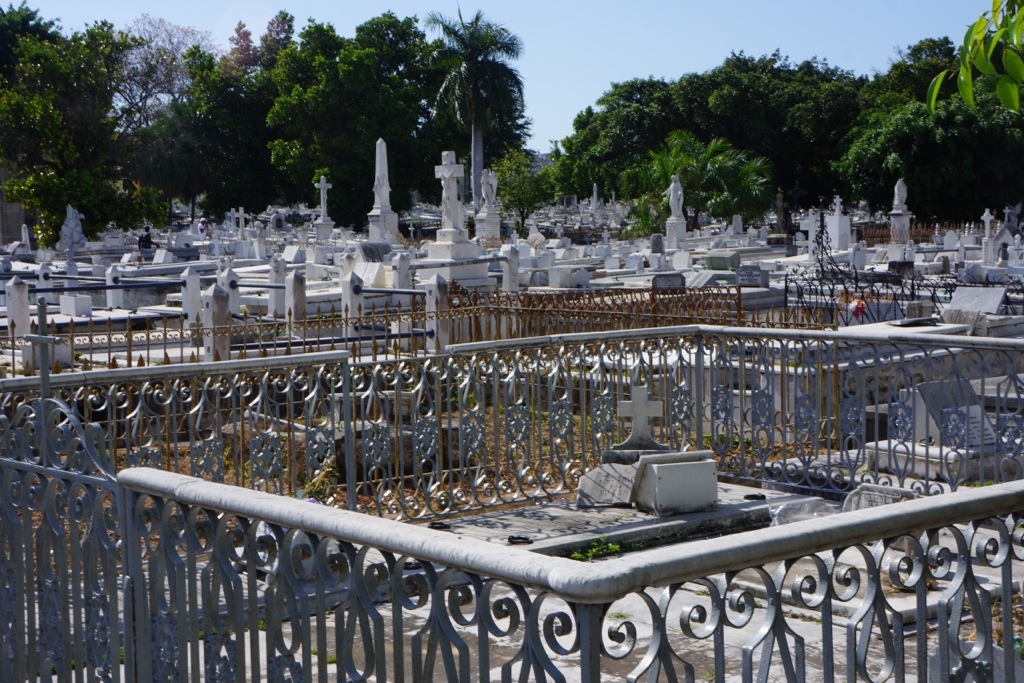
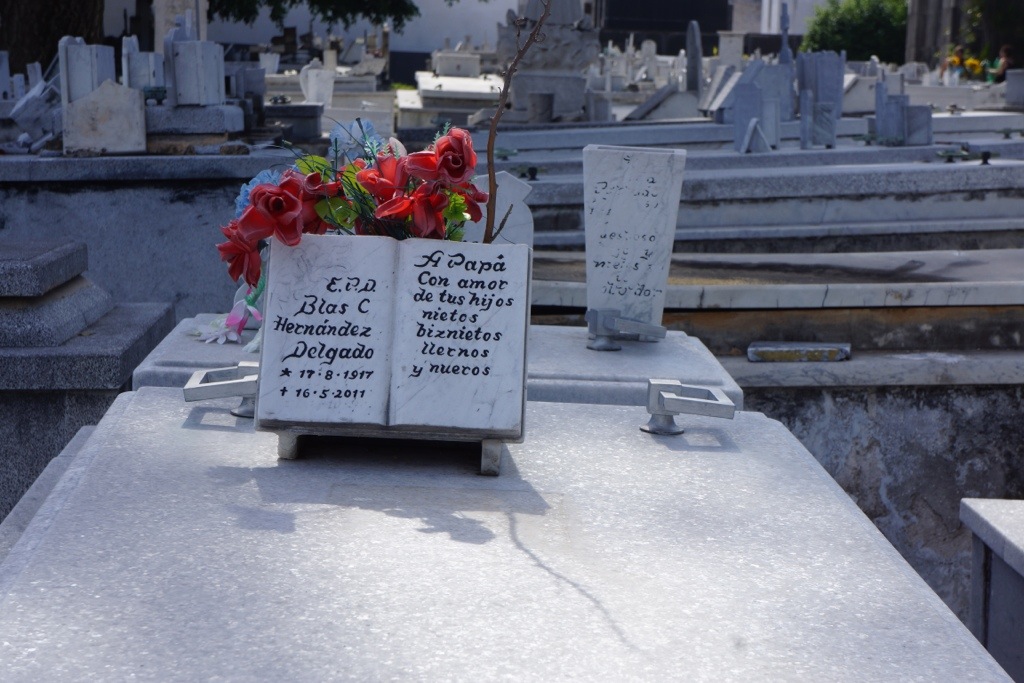
Then off to see a mansion called Casa Miguel Alonso, in the Vedado, or forbidden, area, which is still owned by a family, that, unlike most wealthy families, never left during the revolution. Miguel died a few months ago, so we are shown around by his wife, Josie, who is clearly sad after 54 years of marriage, but is friendly and speaks English. The home feels a bit like a real movie set of the past history and shows the decaying signs of age with little update. We spend quite some time photographing. Though I haven’t a clue what I’m doing, some of the photos are not too bad.
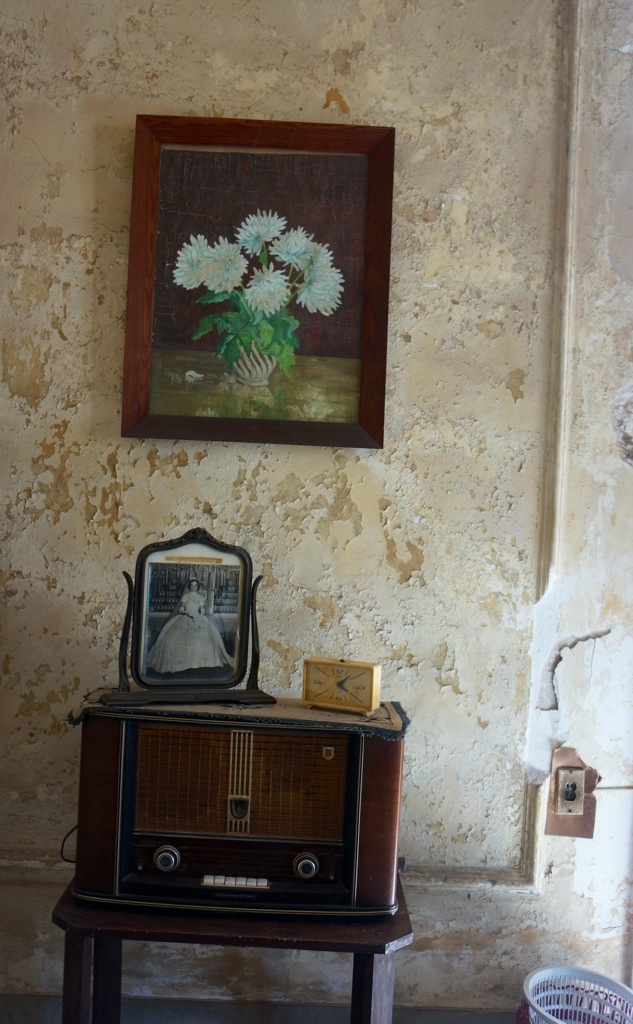
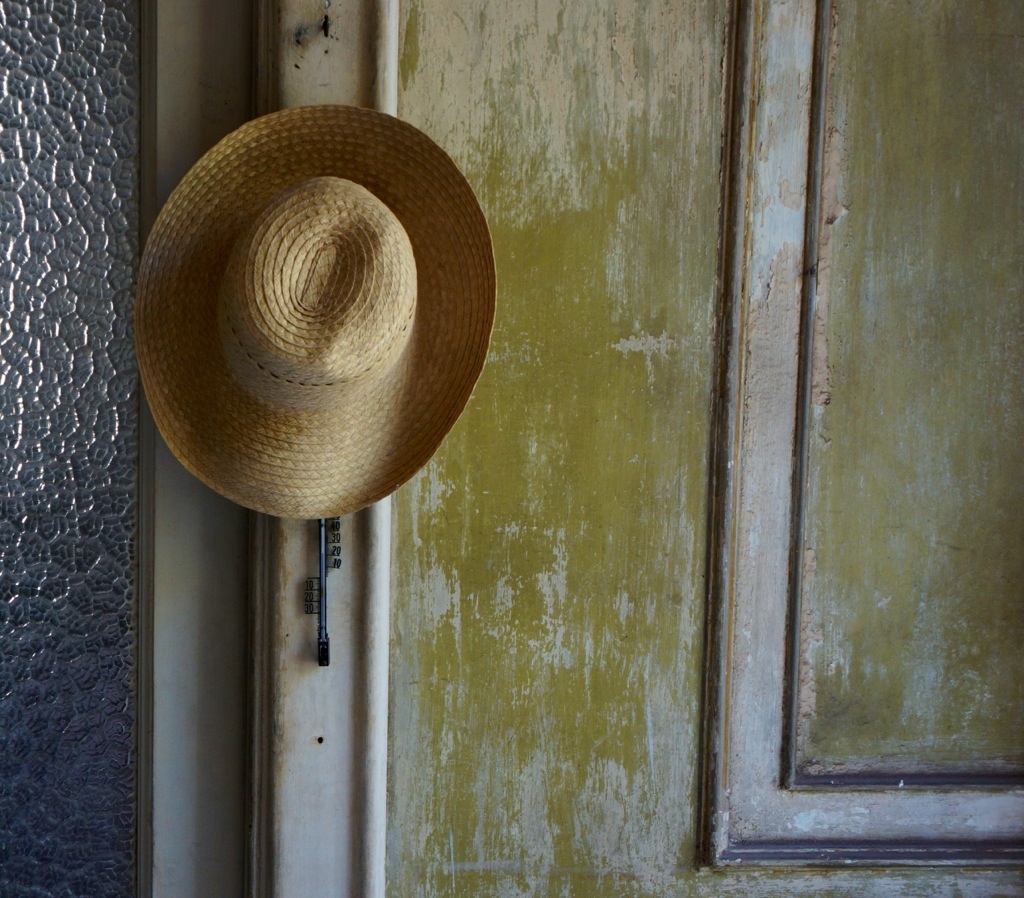
We lunch at El Gringo Viejo, in the home of the owner, who is involved in the society that protects old cars in Havana. The food is very good. I have lobster in a garlic sauce, some others have pigs elbows. And plenty of cold beer.
Back to the hotel for brief blogging and relaxing before setting out for our afternoon adventure, which starts with a walk some distance in more heat than we’ve been having. We are visiting a house which, at various times, has served as a warehouse, a hotel for sailors, a whorehouse and currently is divided into many small apartments. The ones we visit are up three steep flights. We’re welcomed by the residents and able to look and walk into their quarters, and talk and photograph them. Vestiges of stained glass windows from a prior incarnation remain.
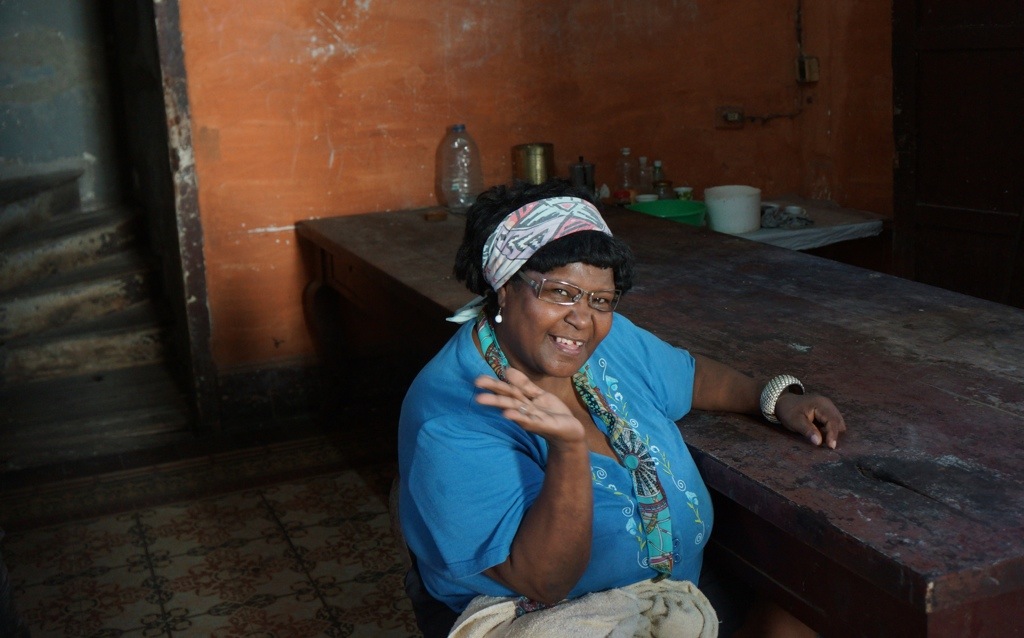
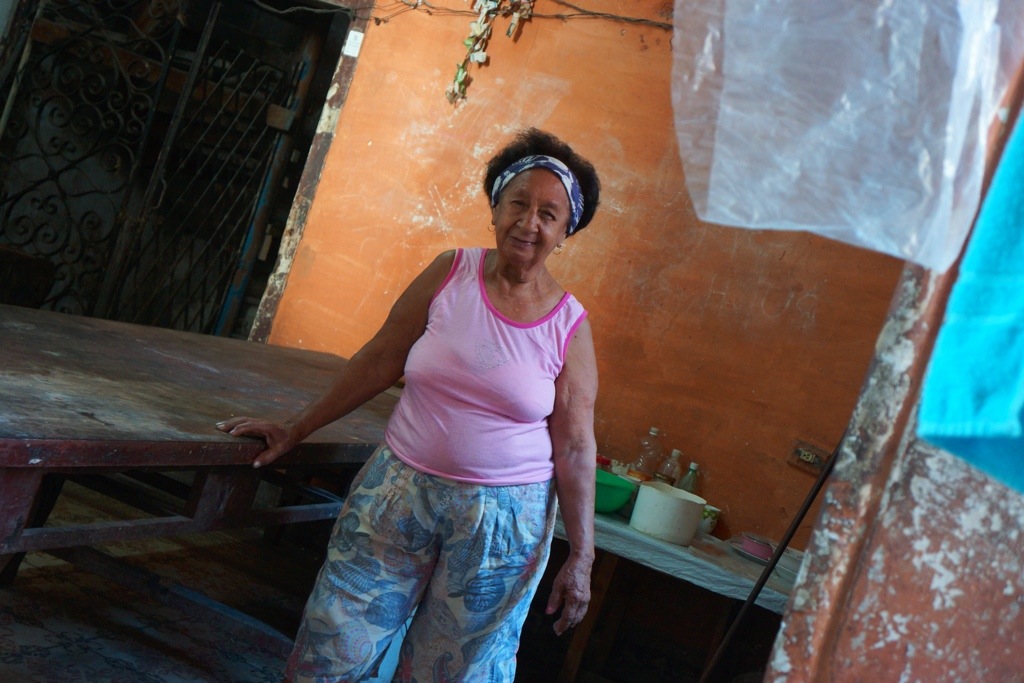
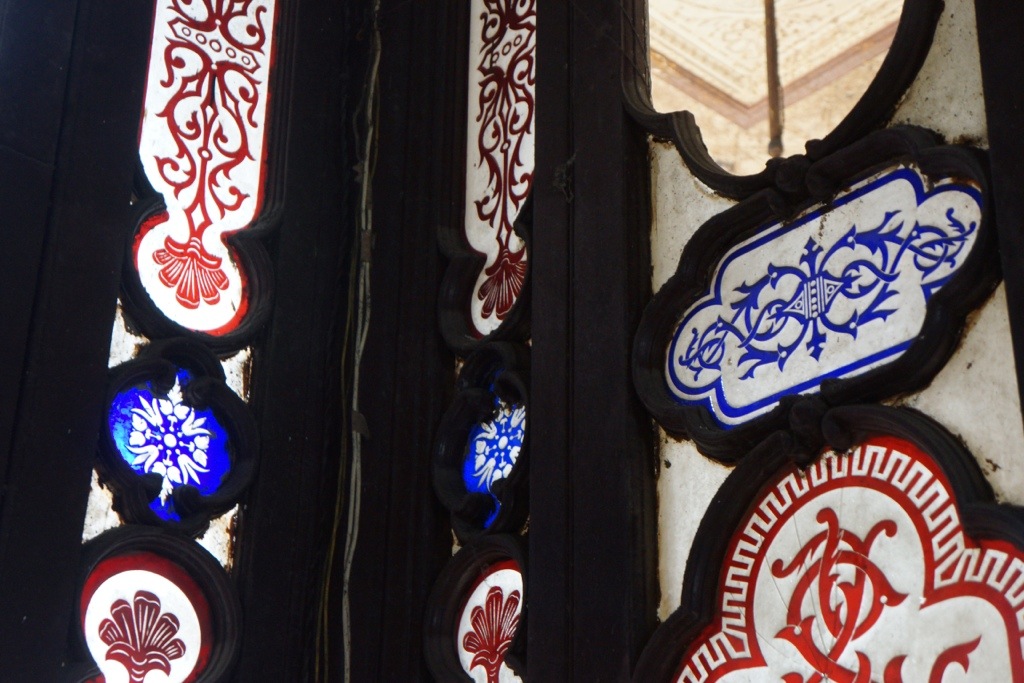
Henry and I decide to go to the nearby hotel to check emails and, in my case, to make a blog post. After this, we walk down a main drag called the Prado, where dancing, dominoes playing and kids playing are going on, among other things. We give some of the children small gifts we’ve brought (lollipops and other candy, in my case), which delights them.
As anticipated, we hook up with the rest of our group at the Malecon, for a walk along the sea wall, where we watch young men diving from rocks into the ocean and chat with some locals.

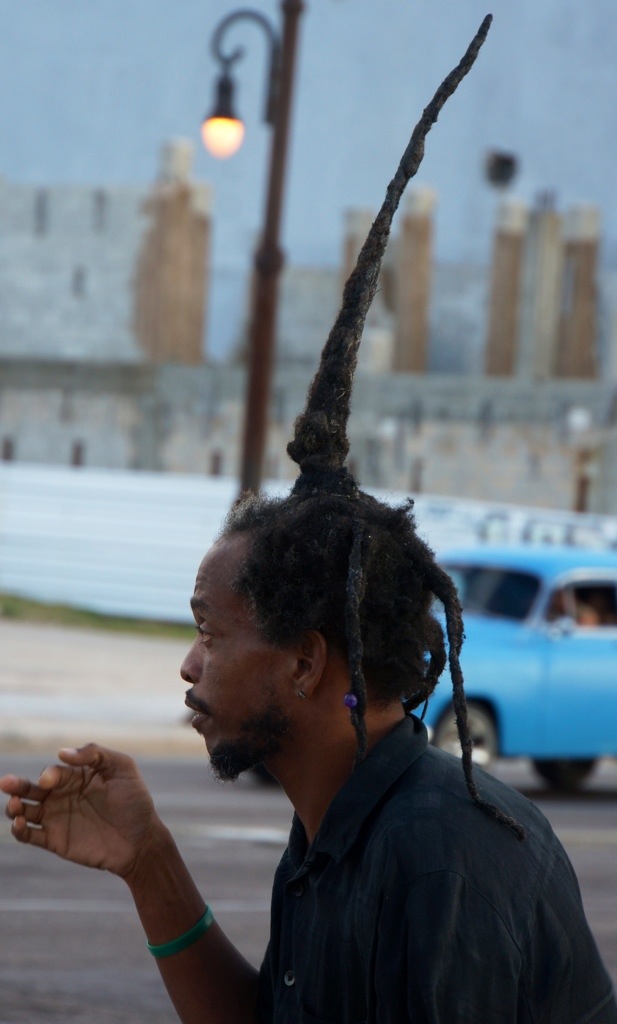
After a while, we break into groups, with JP and Karin and I heading back down the Prado with Dustin. I photograph couples dancing the tango and old cars whizzing by in blurs.
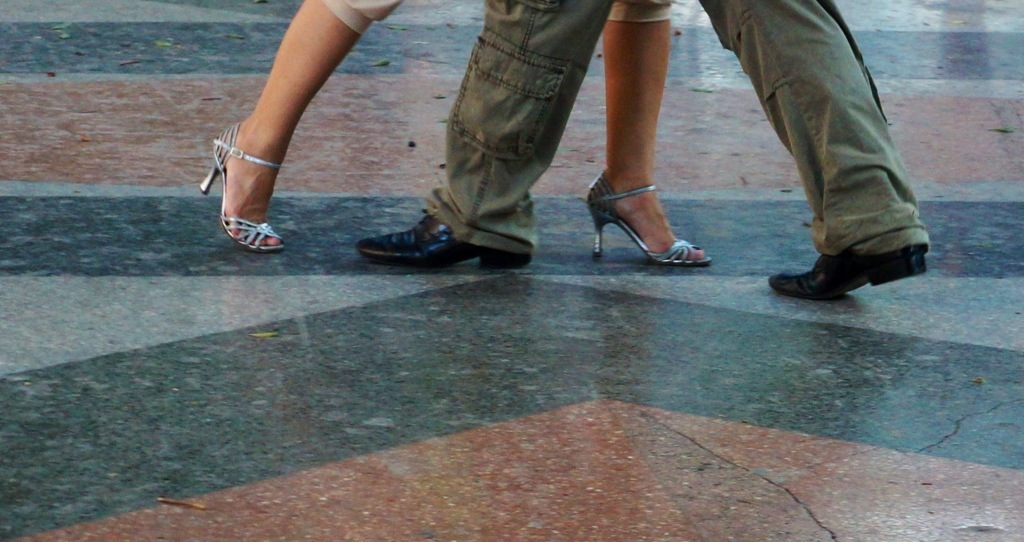
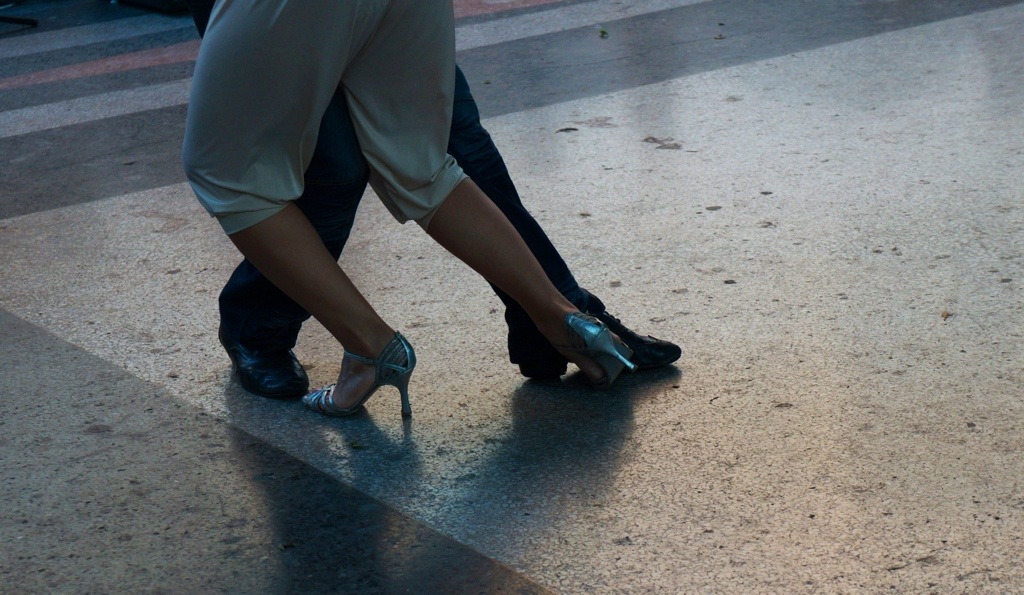
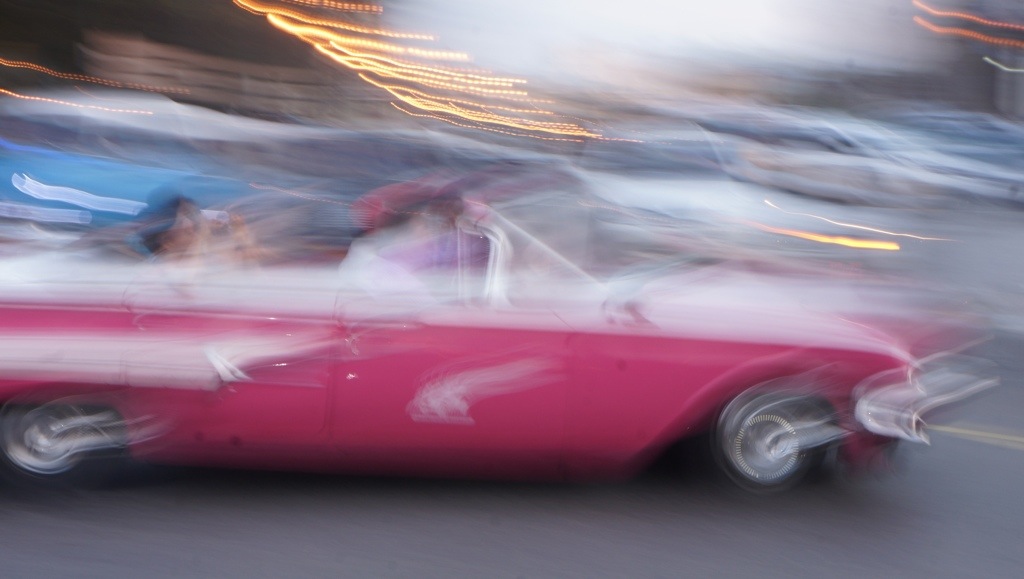
After a while, I walk back to the hotel, wash and change shirts and head out to dinner at a nearby restaurant, Nao, that had been recommended by Dustin. After a really very good beef dinner (with excellent fries) and a couple Bucanero (think pirates) beers, I head back to the hotel to prepare for tomorrow morning’s rather early departure for Trinidad.
I feel I’ve barely scratched the surface of Havana and would welcome more time here (I have less than a day after Trinidad). It does feel like a trip back in time, and not only because of the vintage cars, though that certainly adds to the feel. There’s a flavor of the exotic here, though I don’t find it easy to pinpoint why. One begins to get a small feel for the Cuba’s complicated history and it’s troubled relationship with the US. Not unlike Myanmar, there’s an undercurrent of possible change, though formidable obstacles remain.
|
|





























































